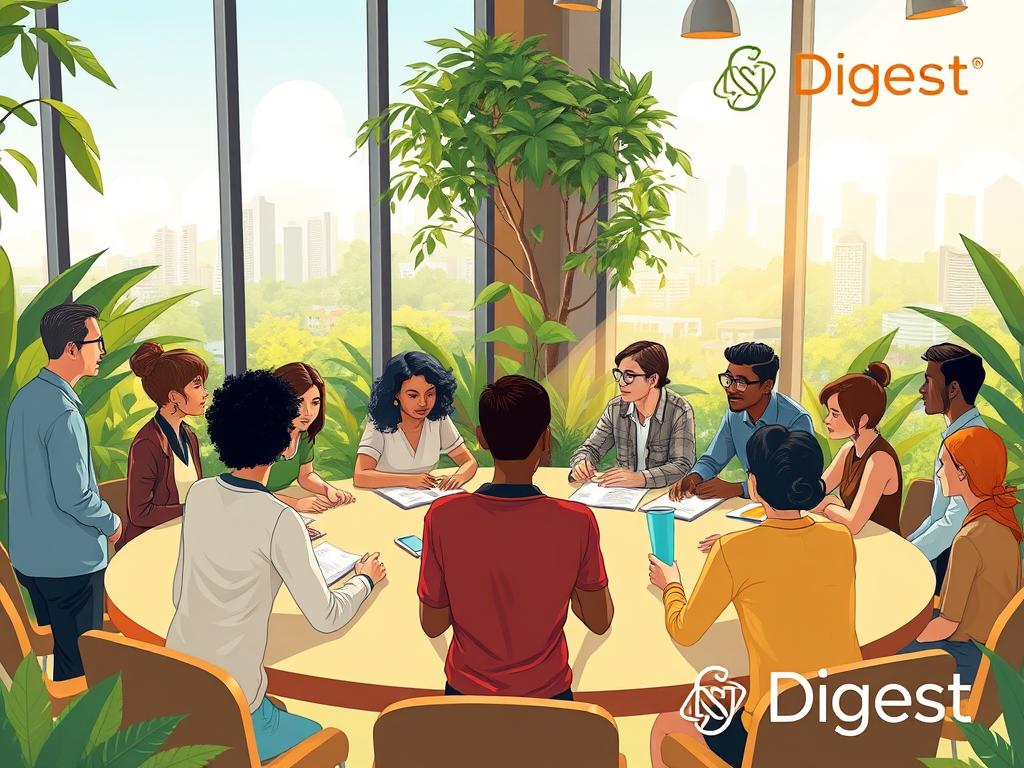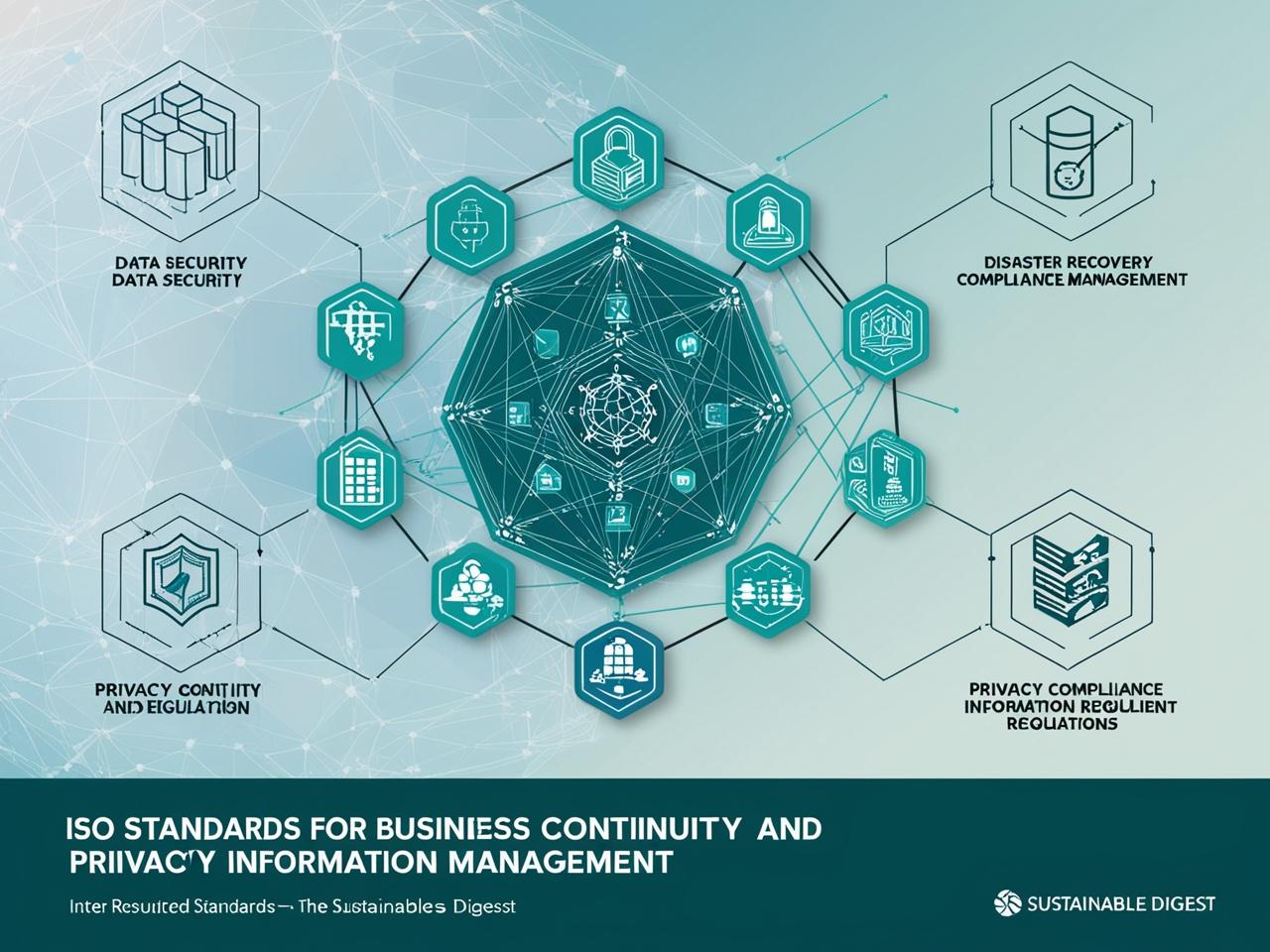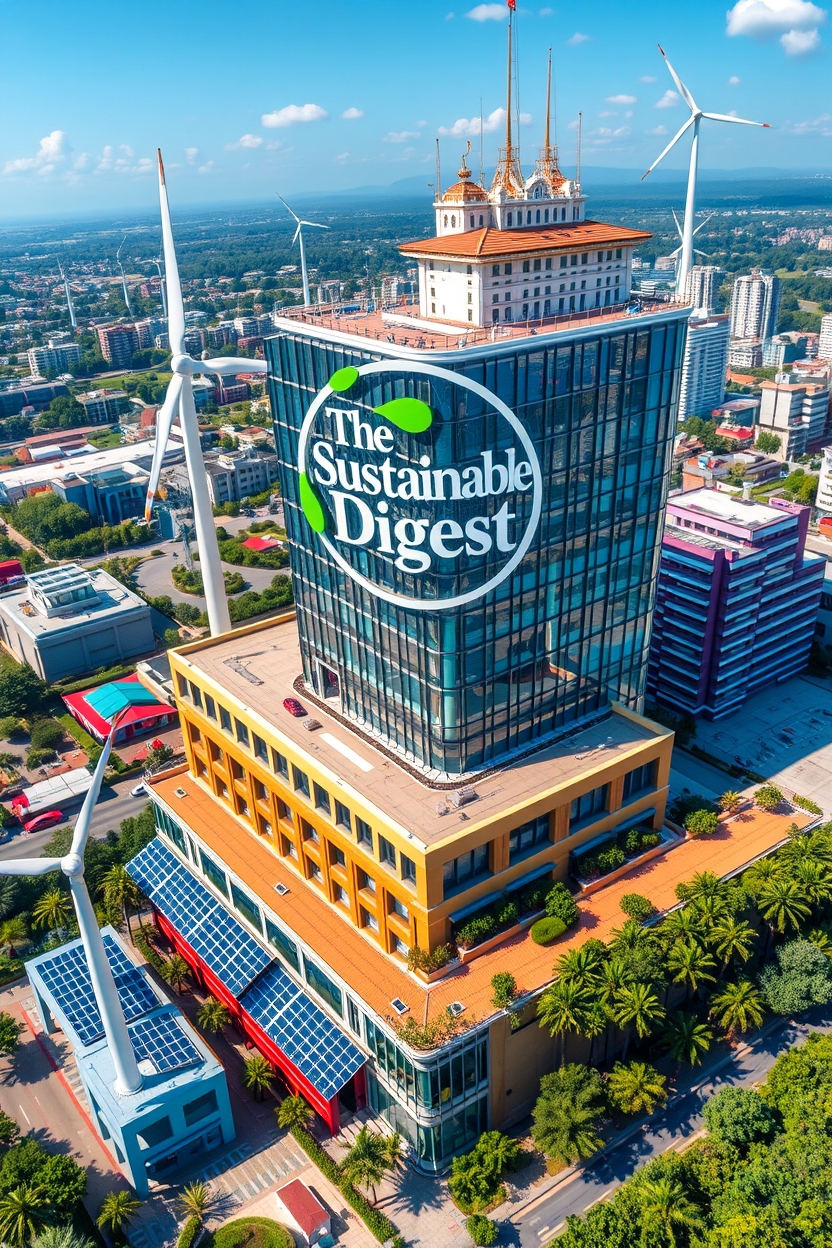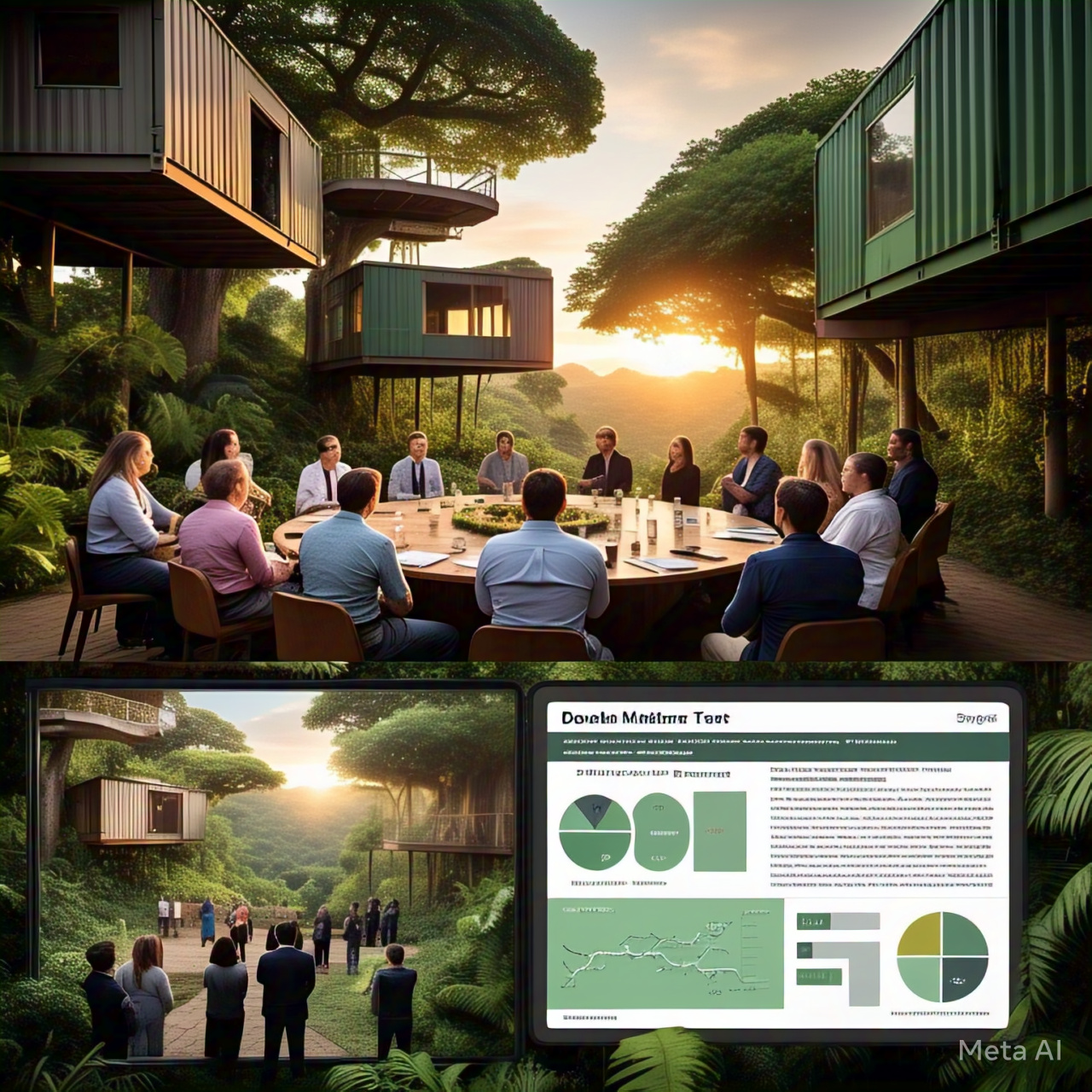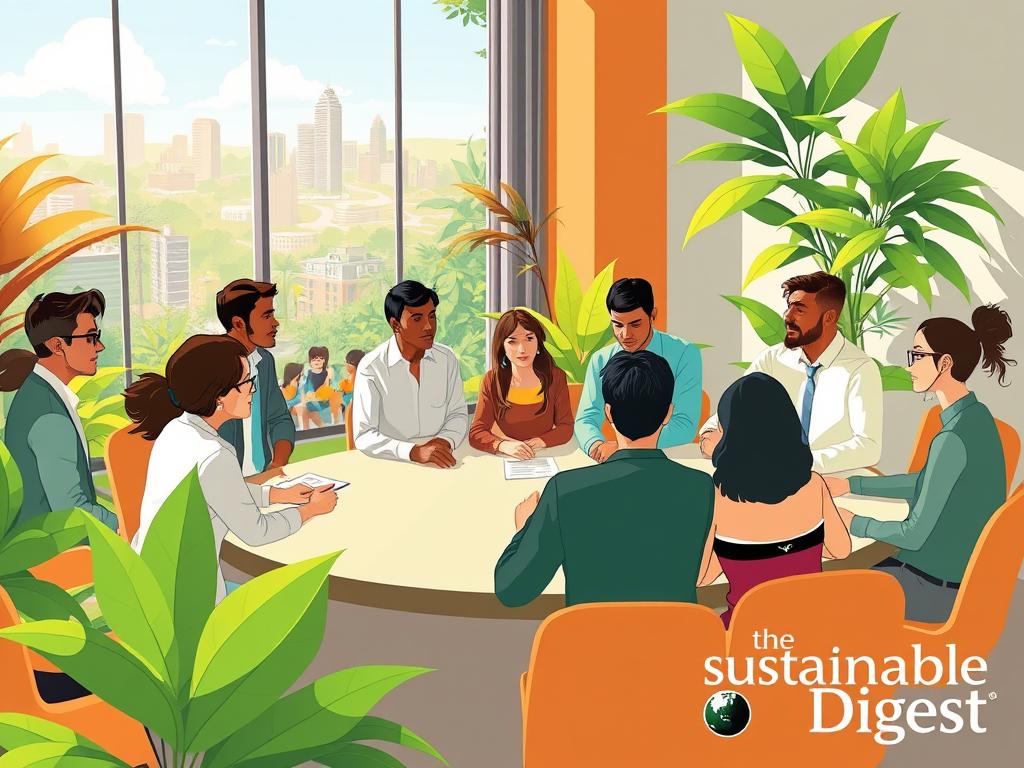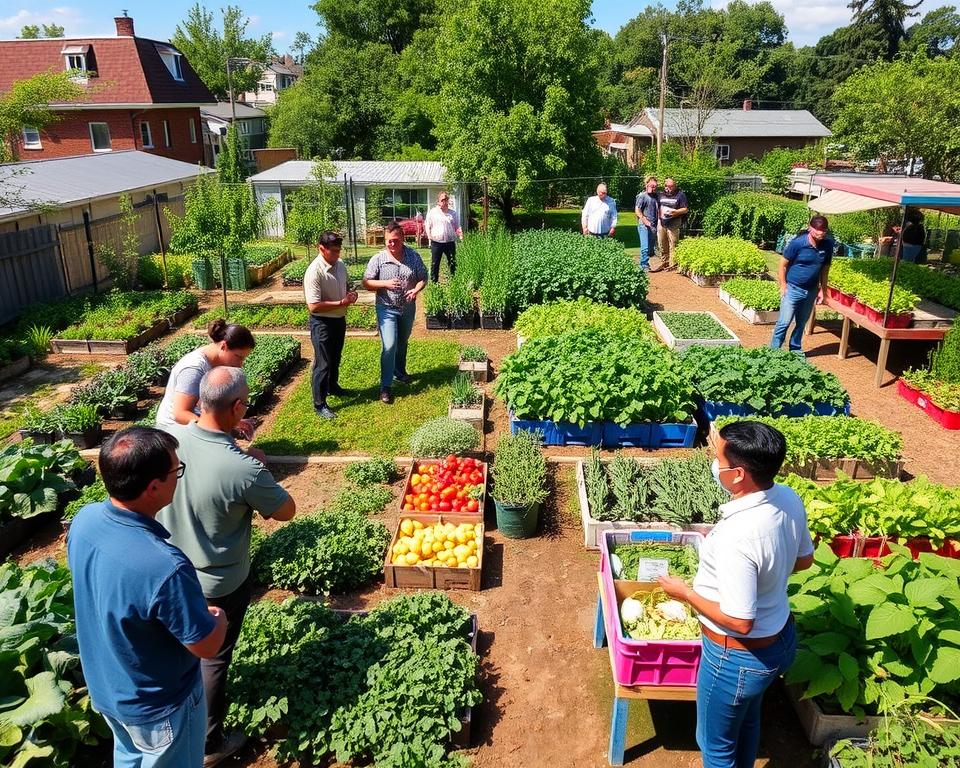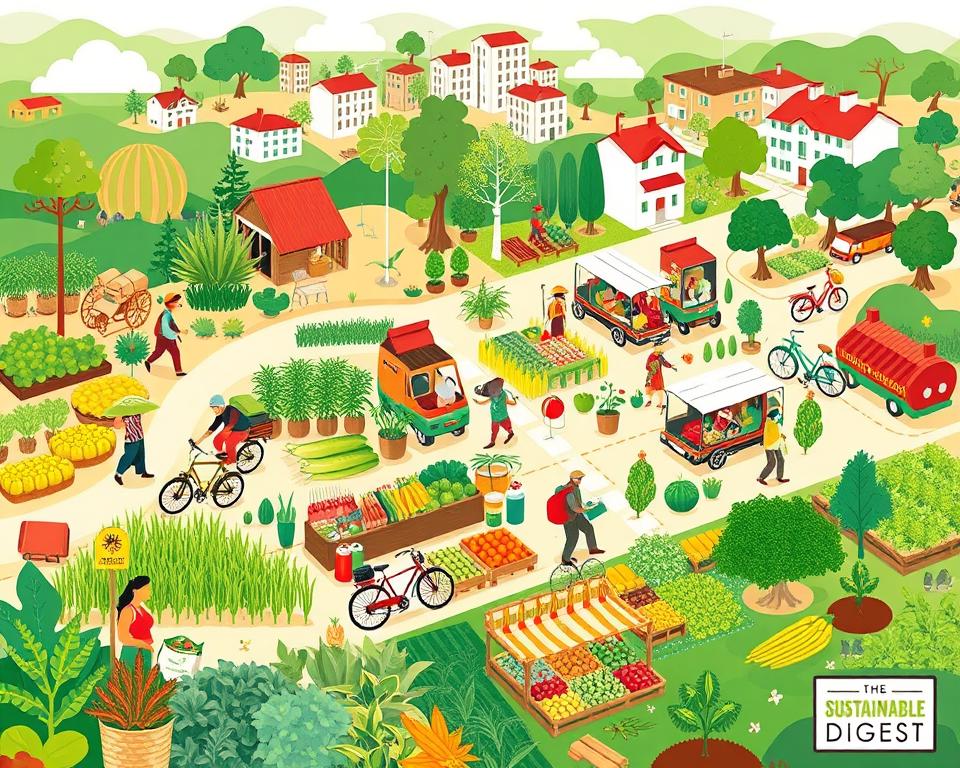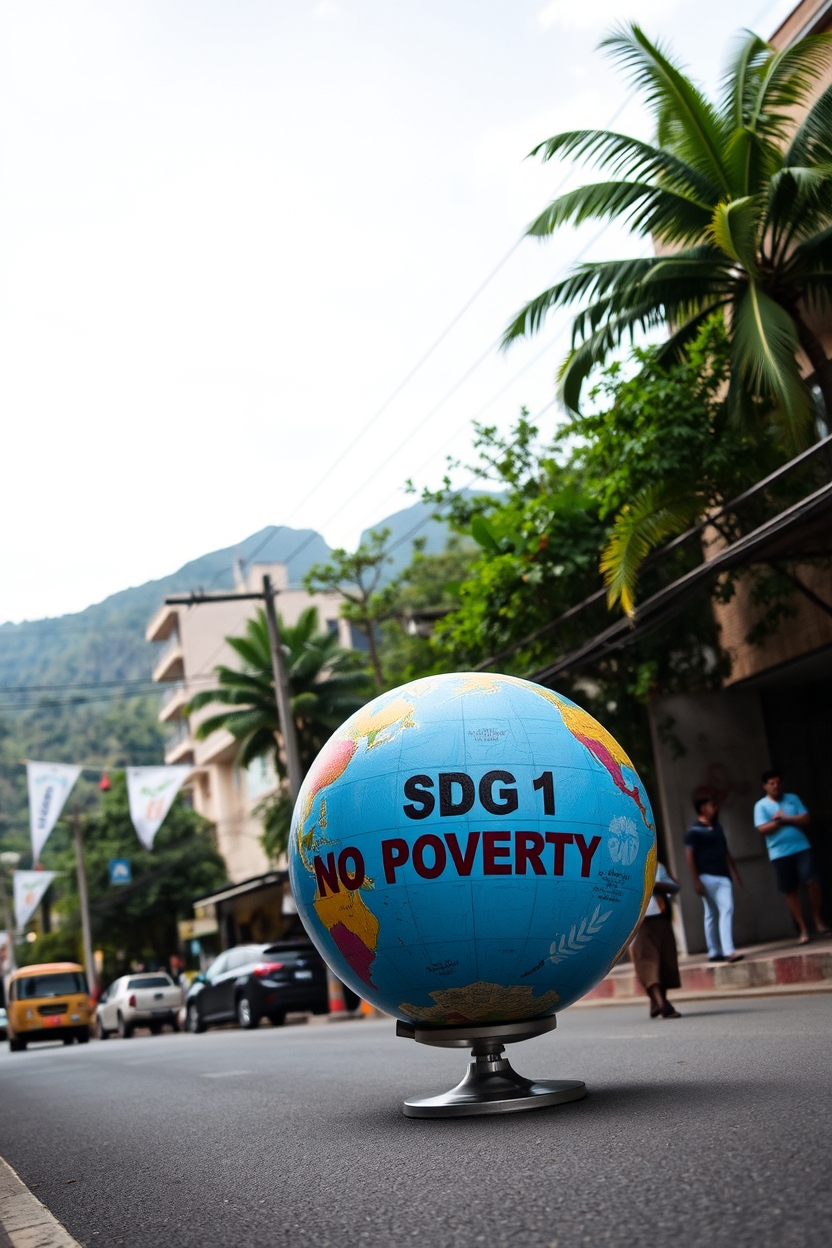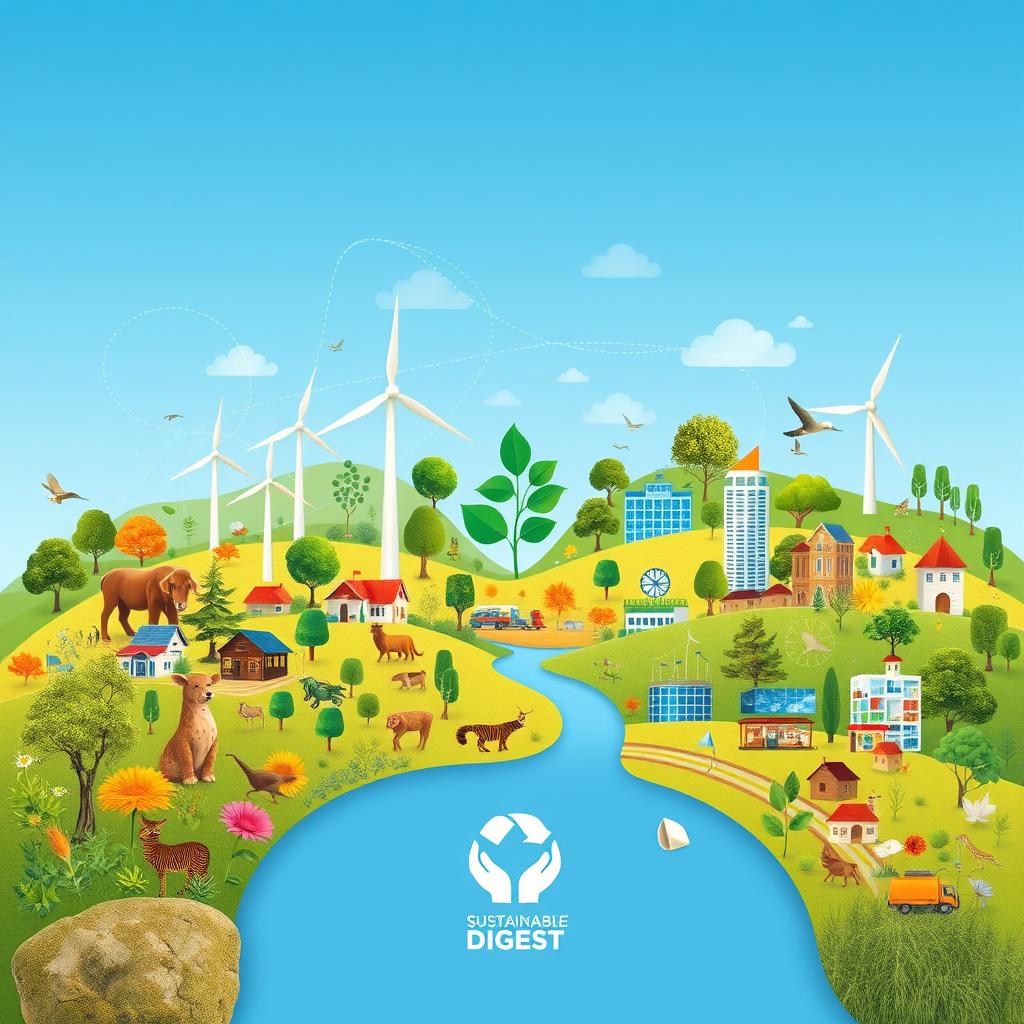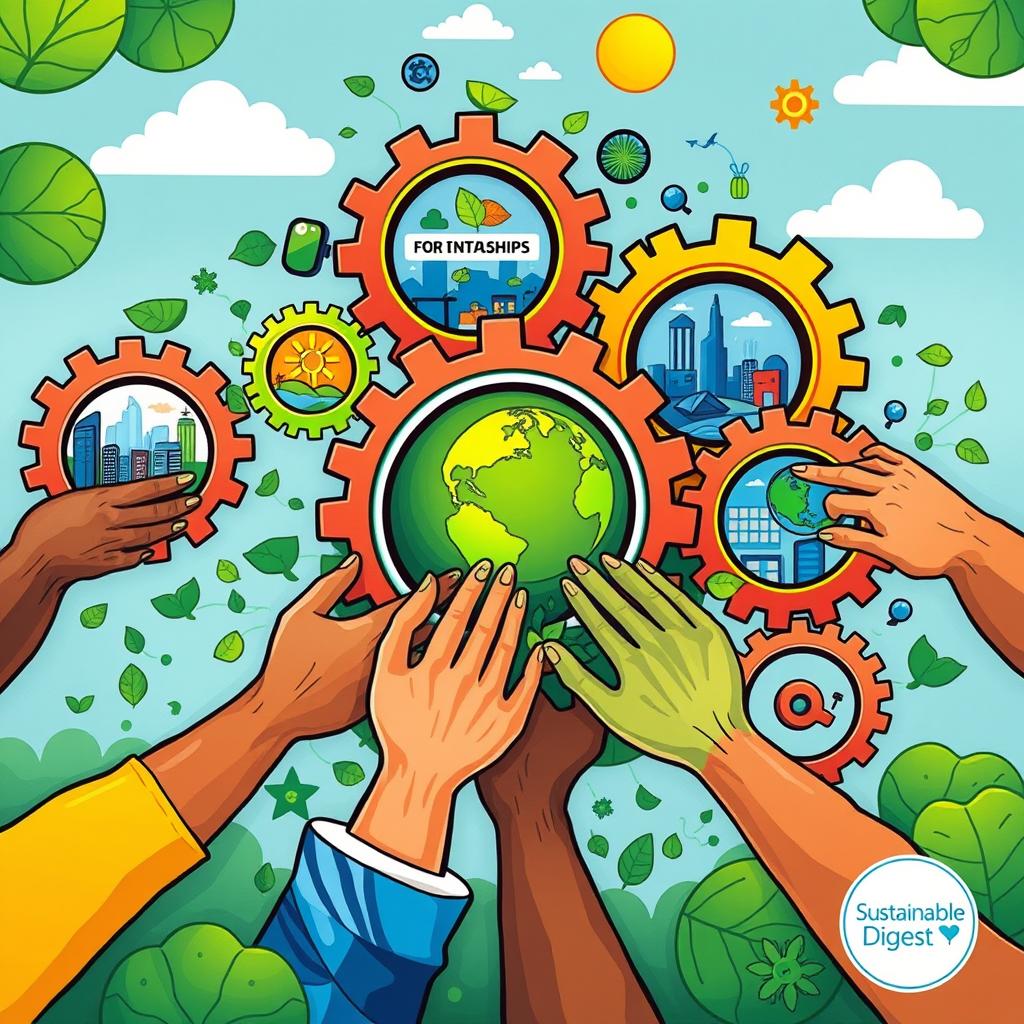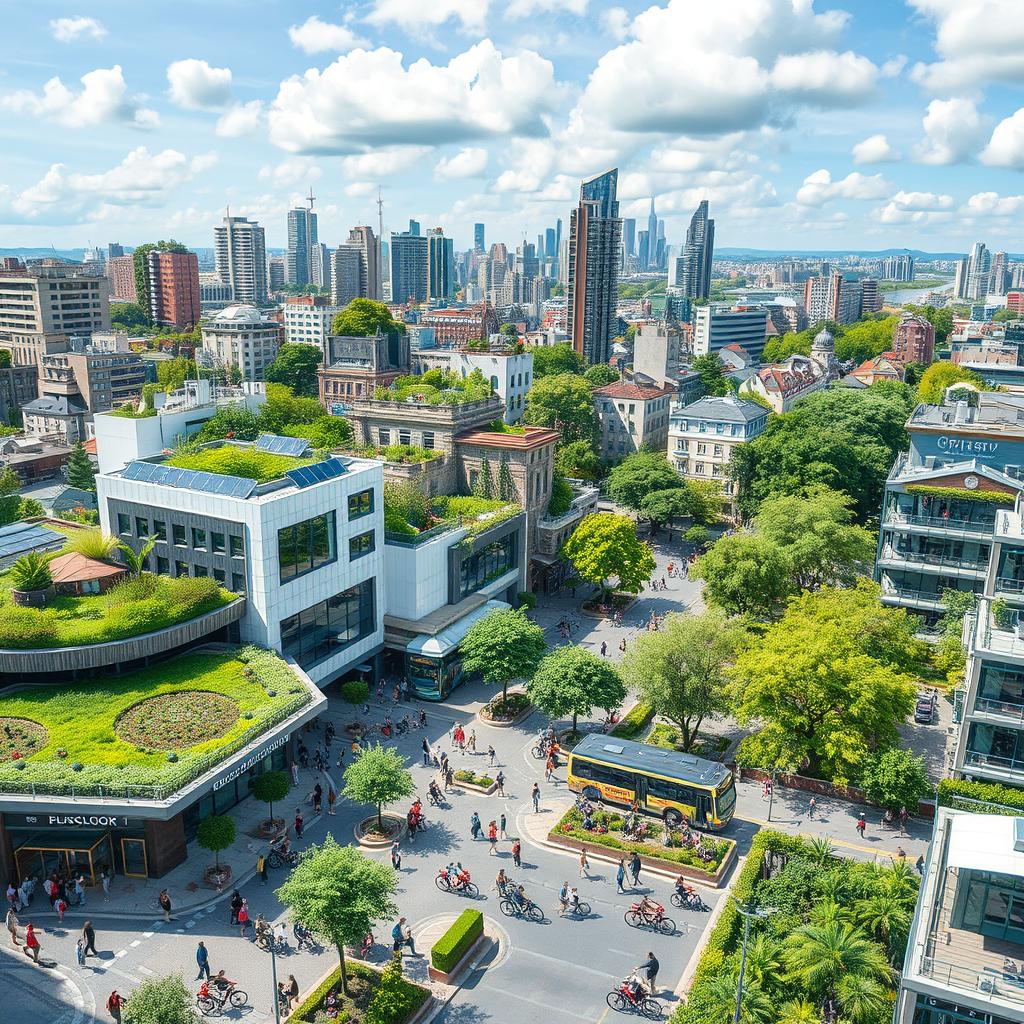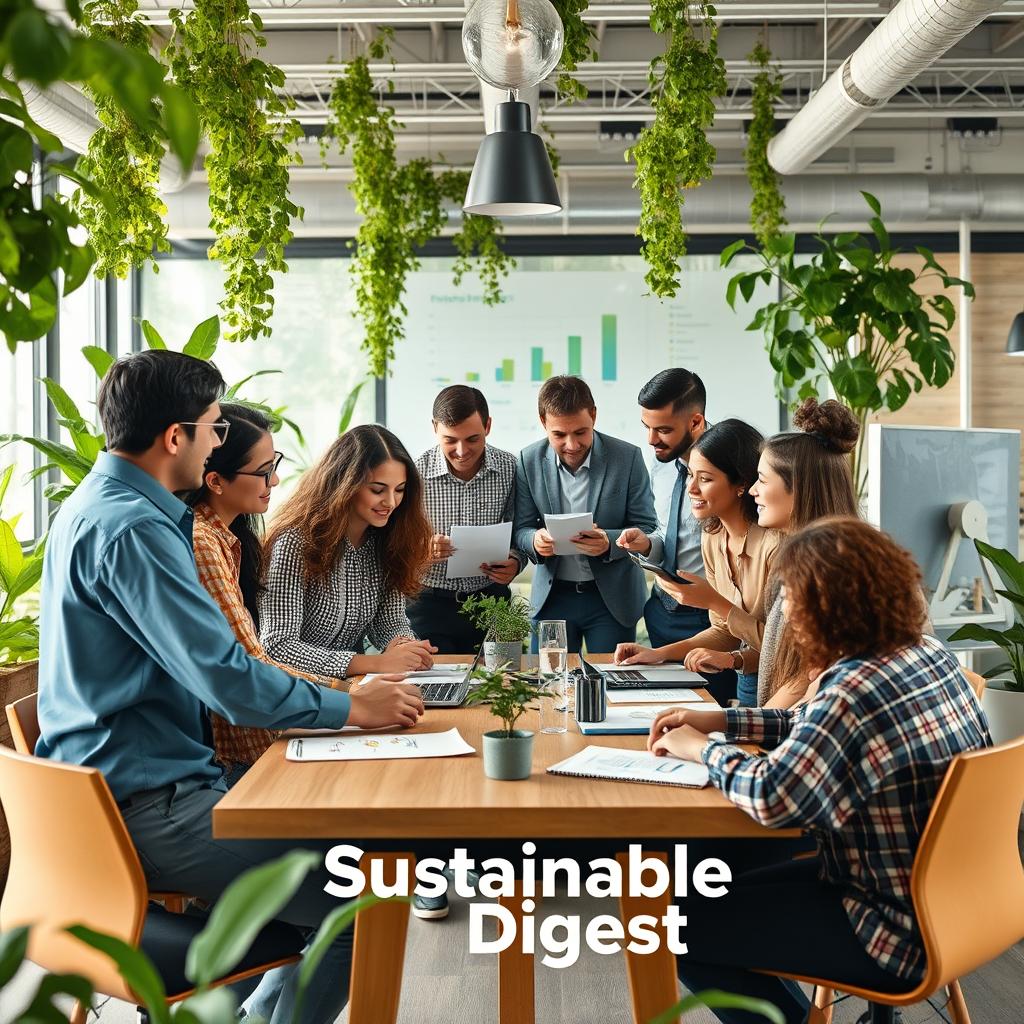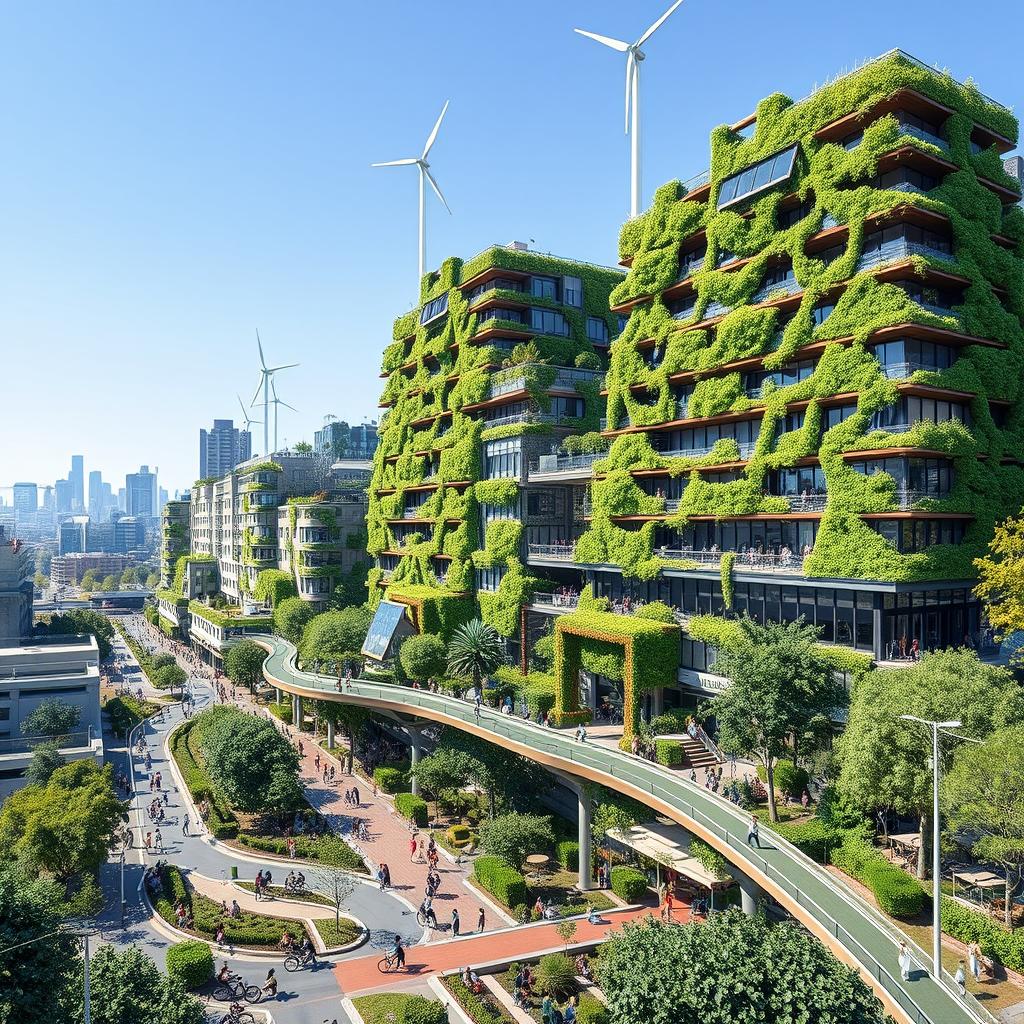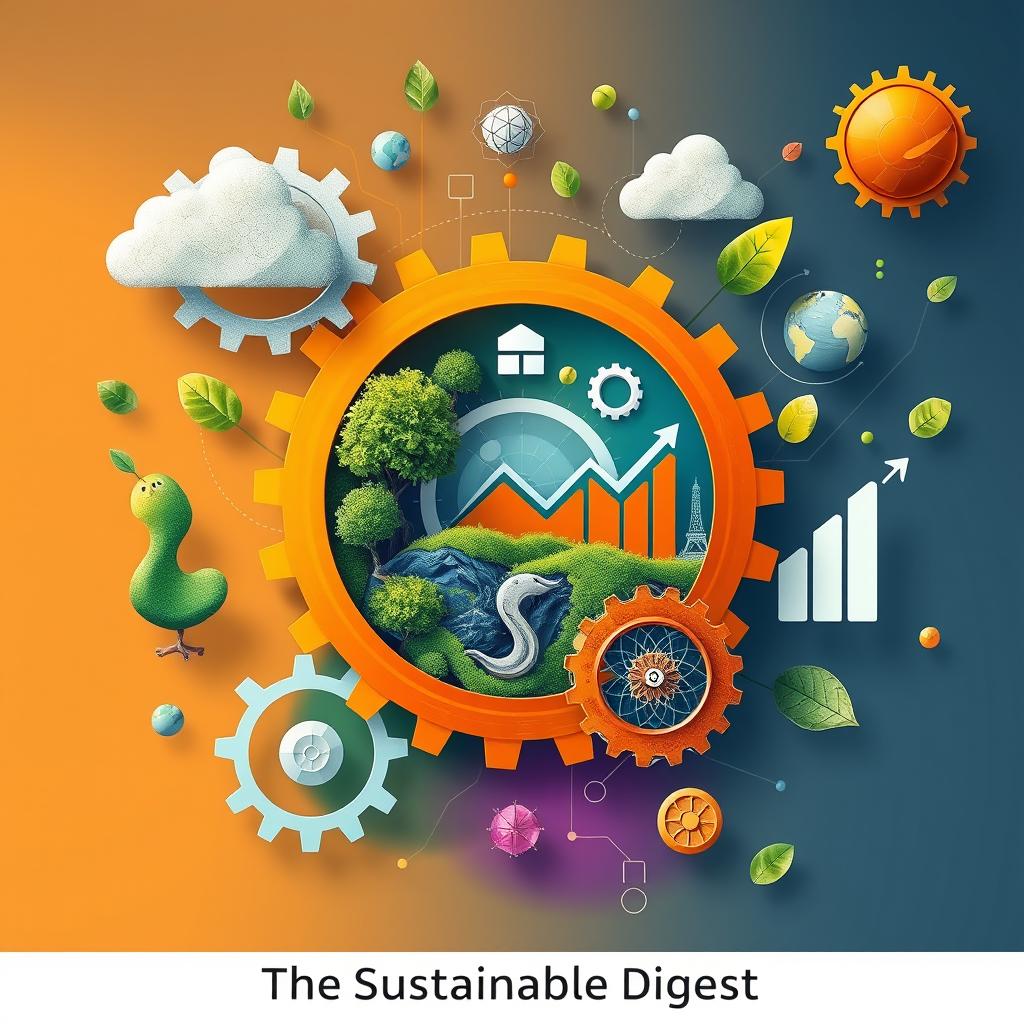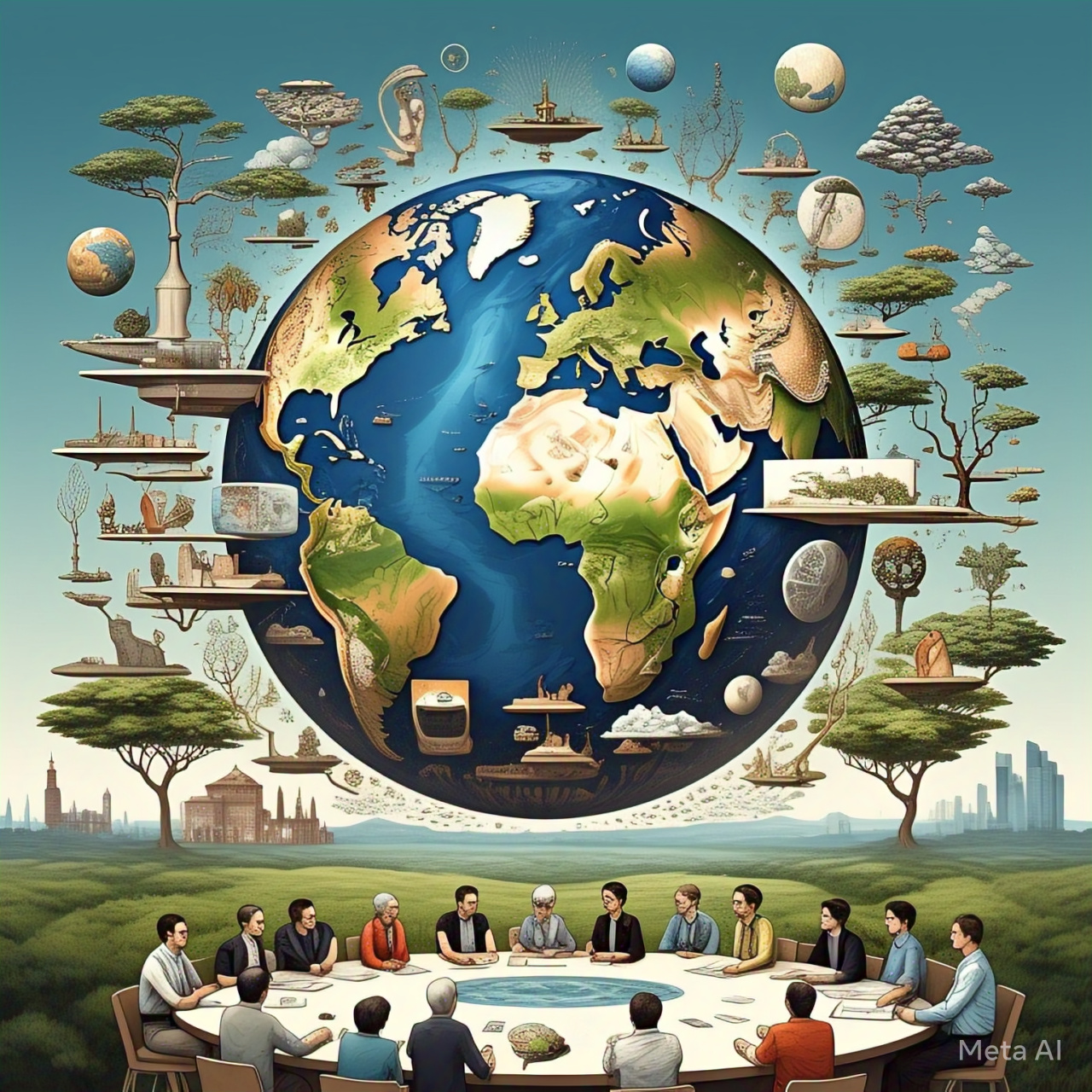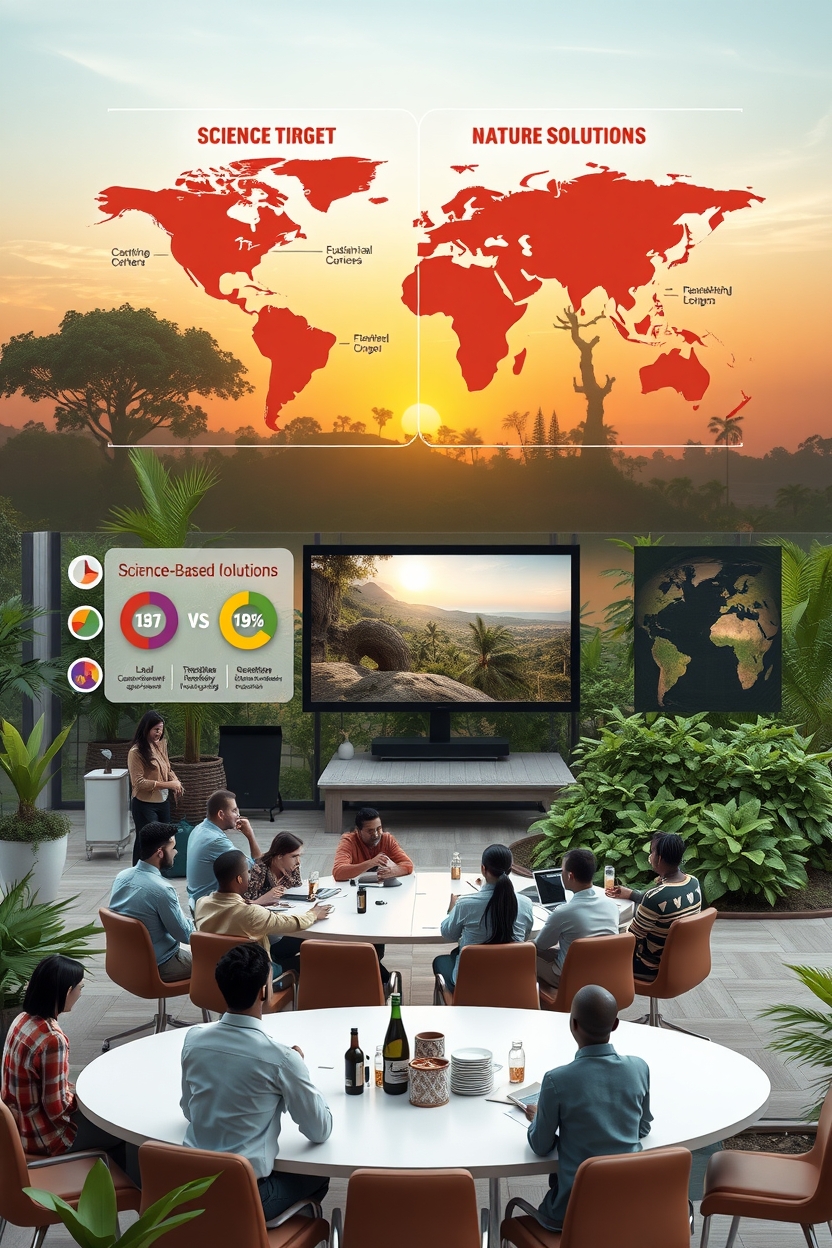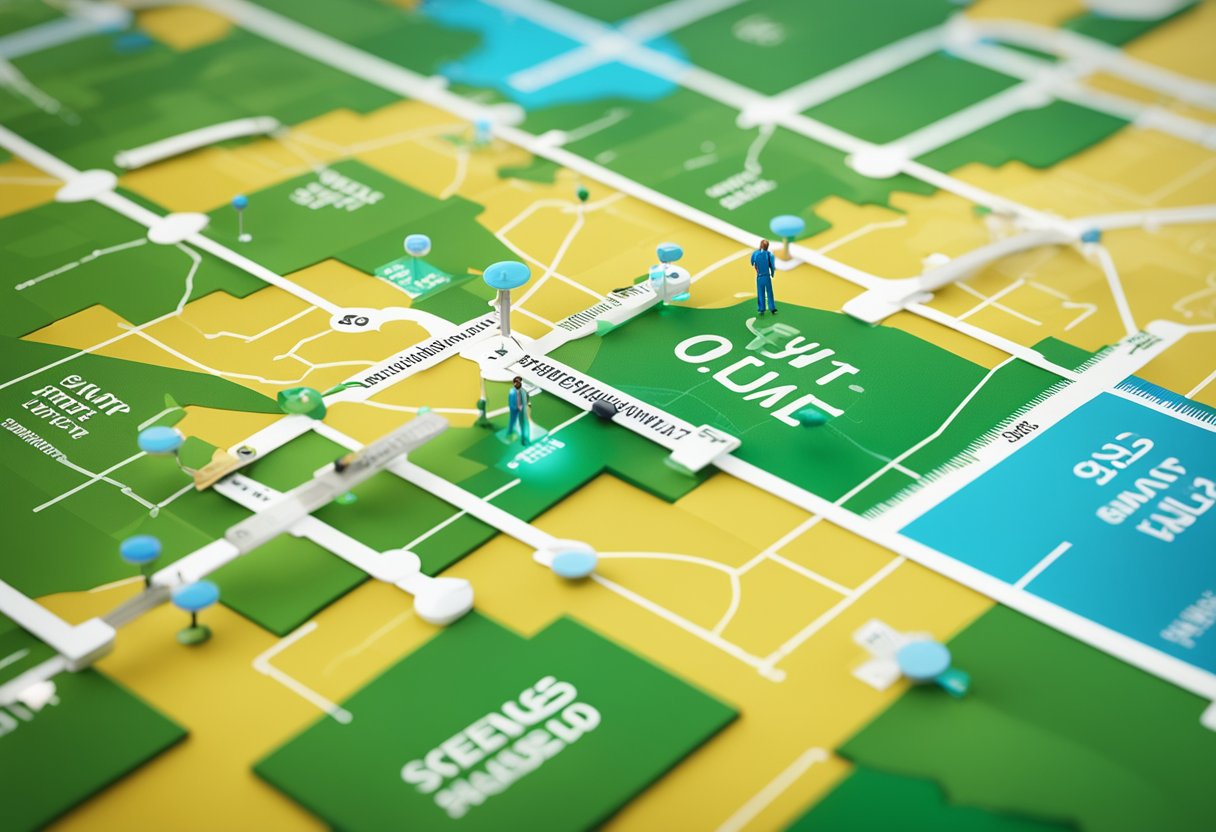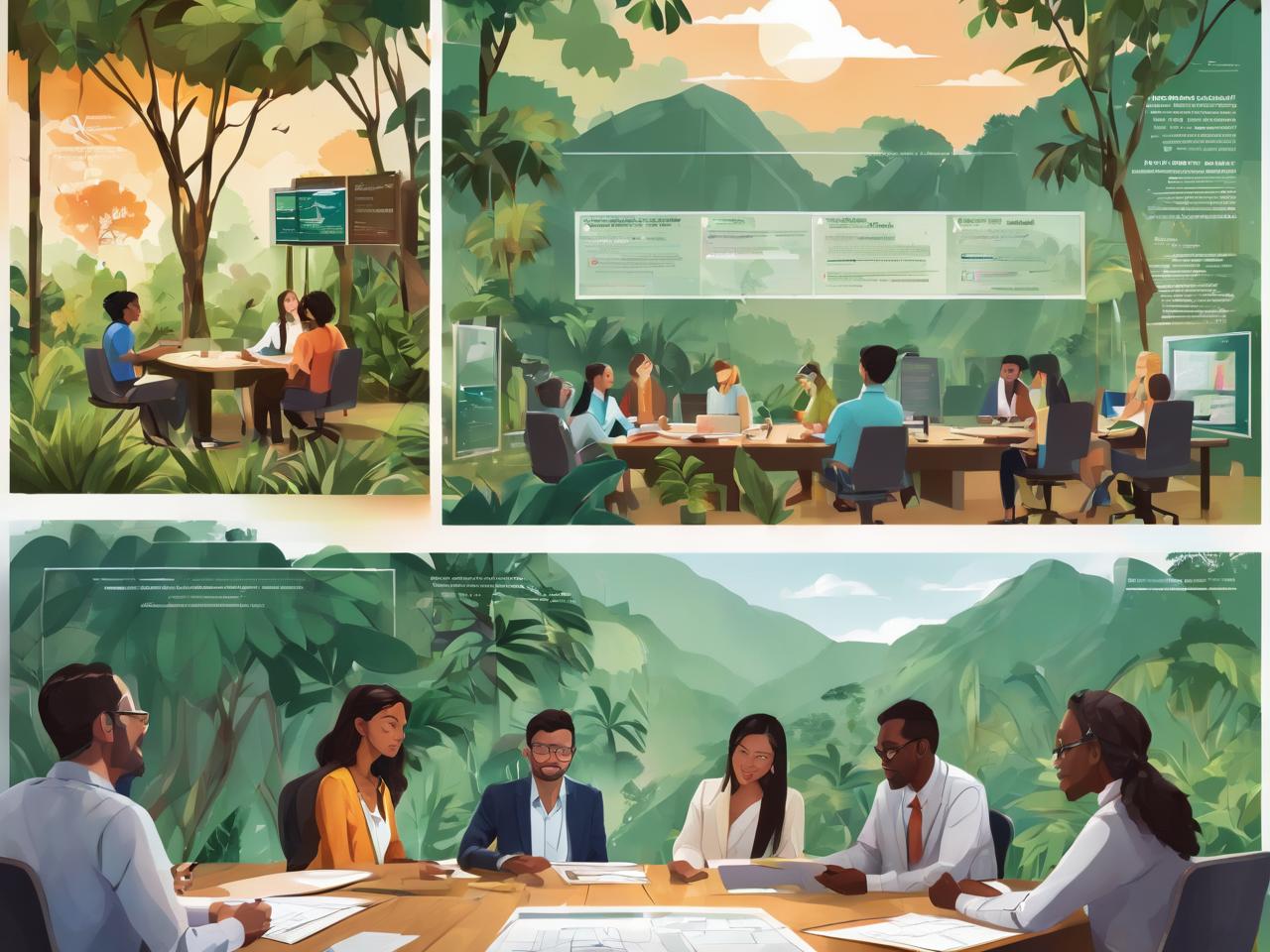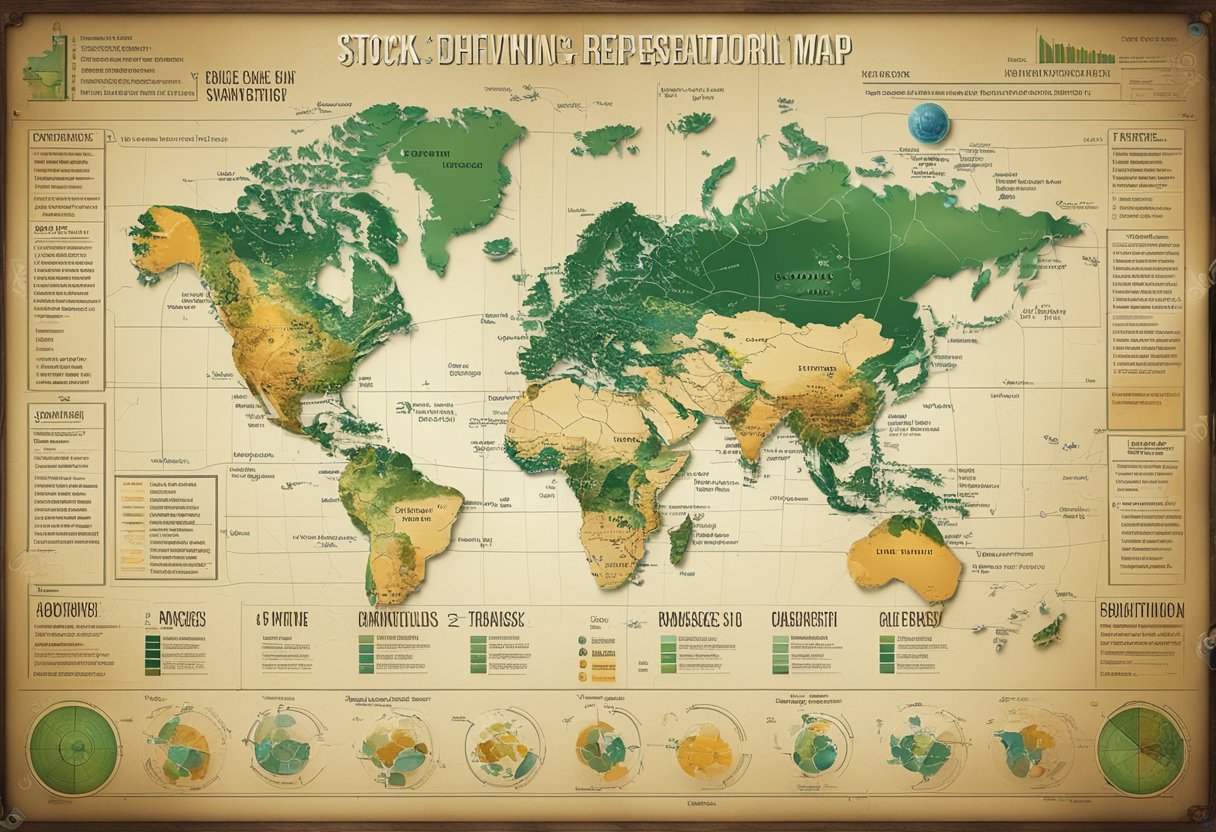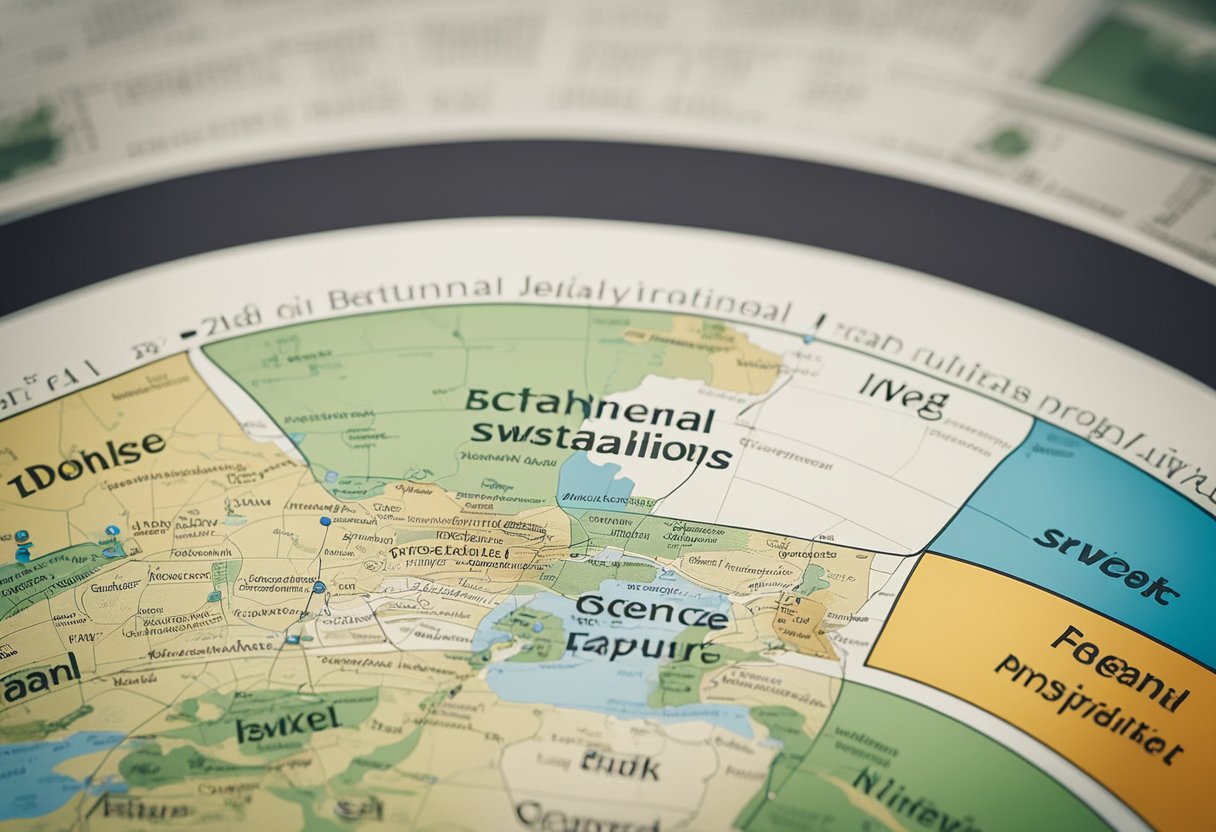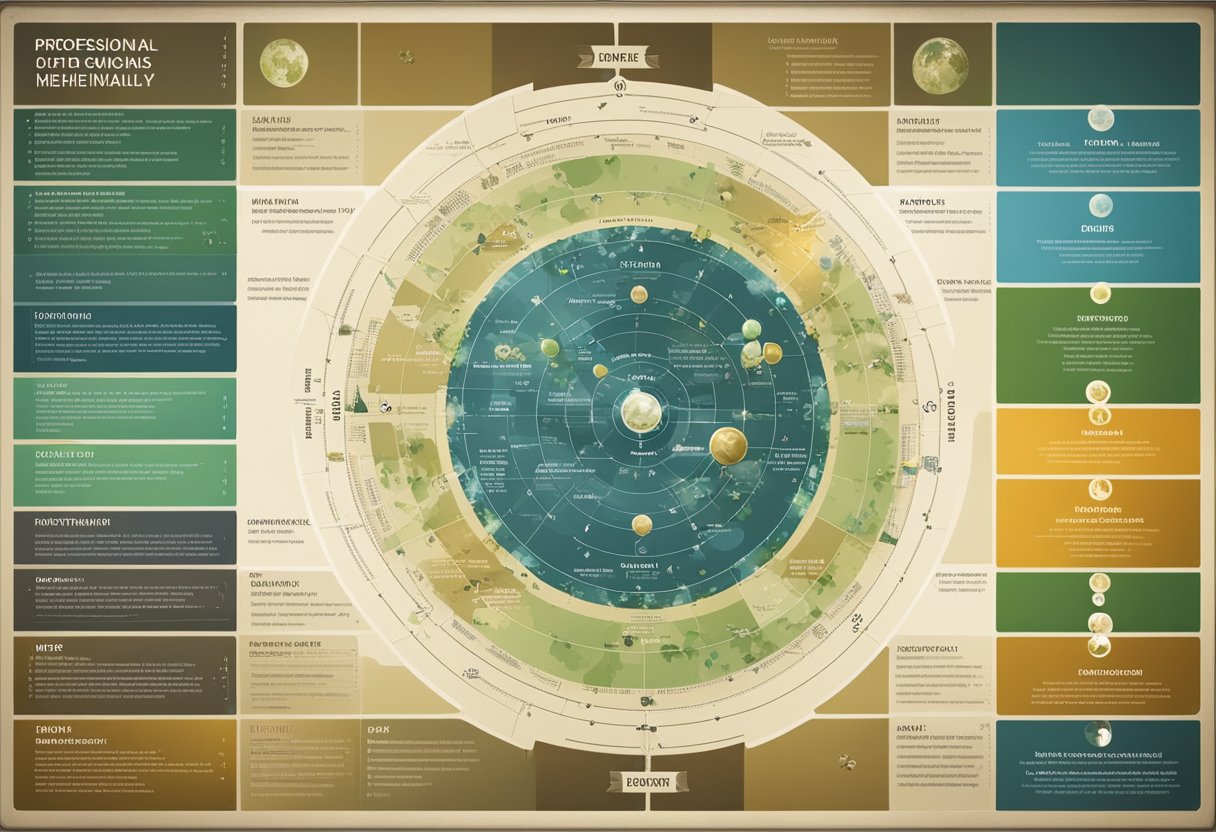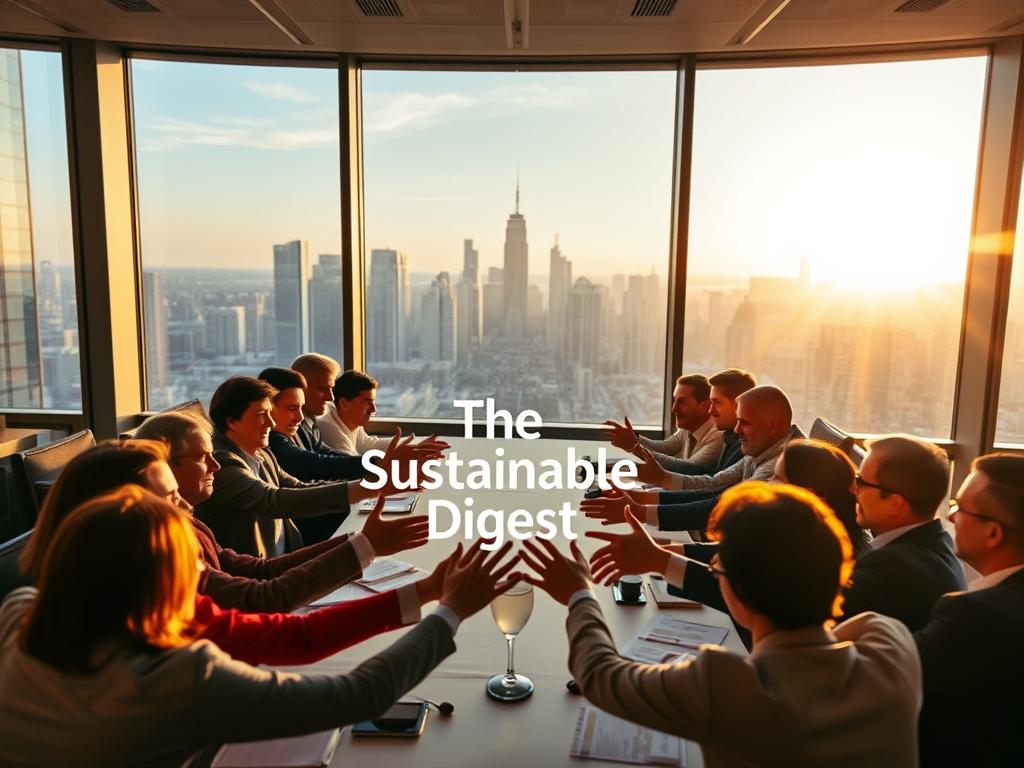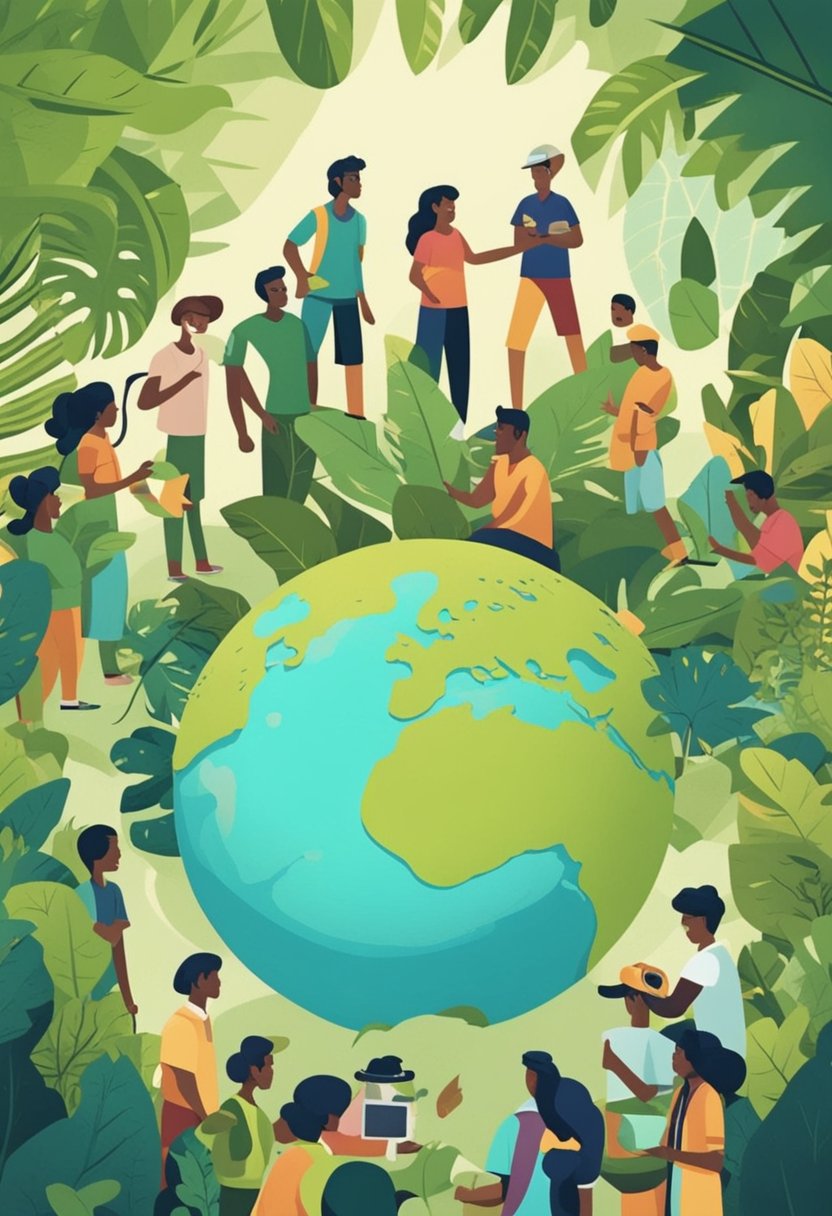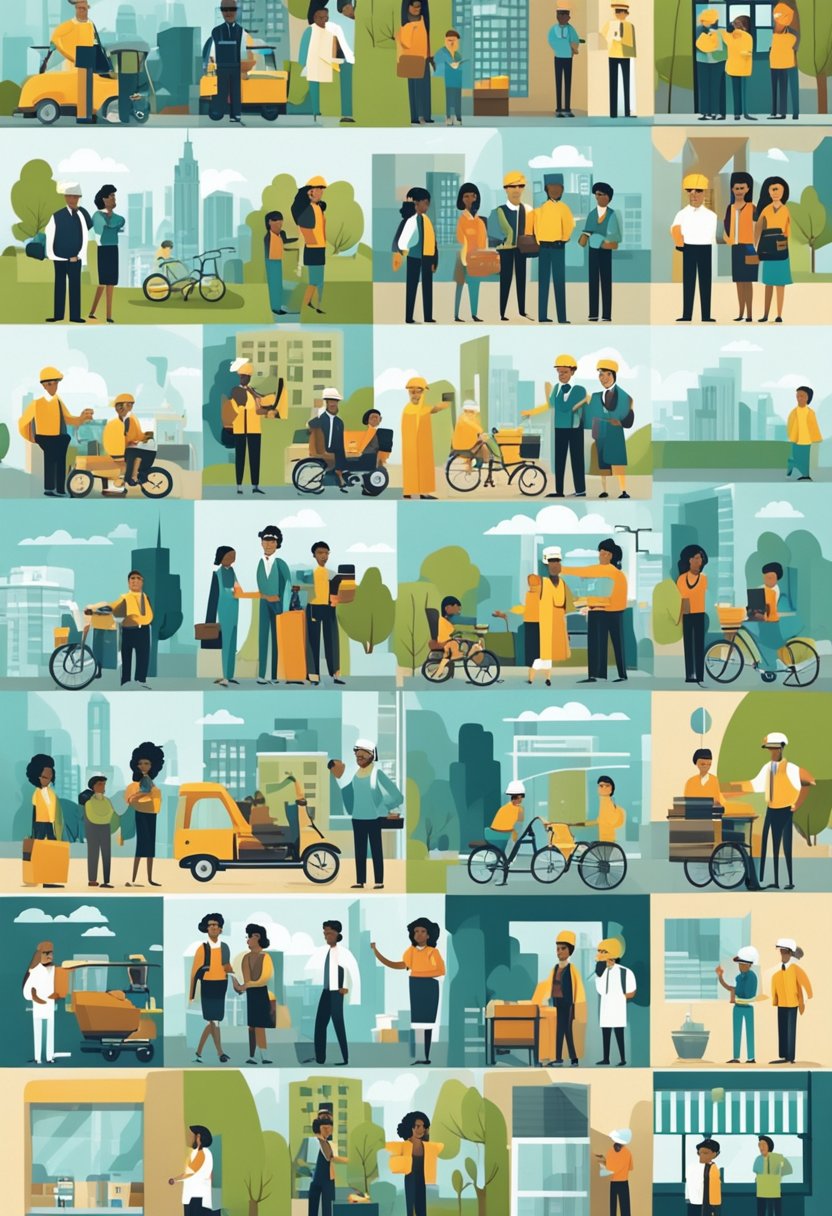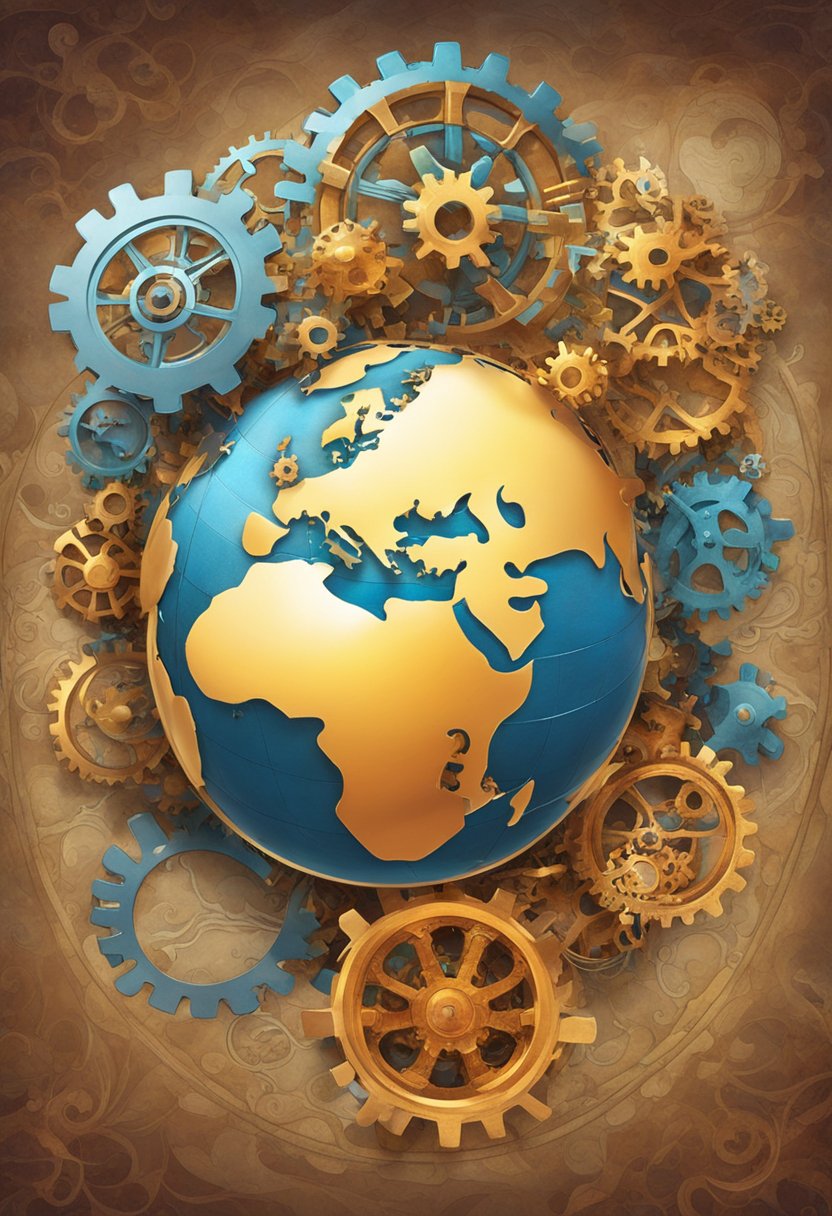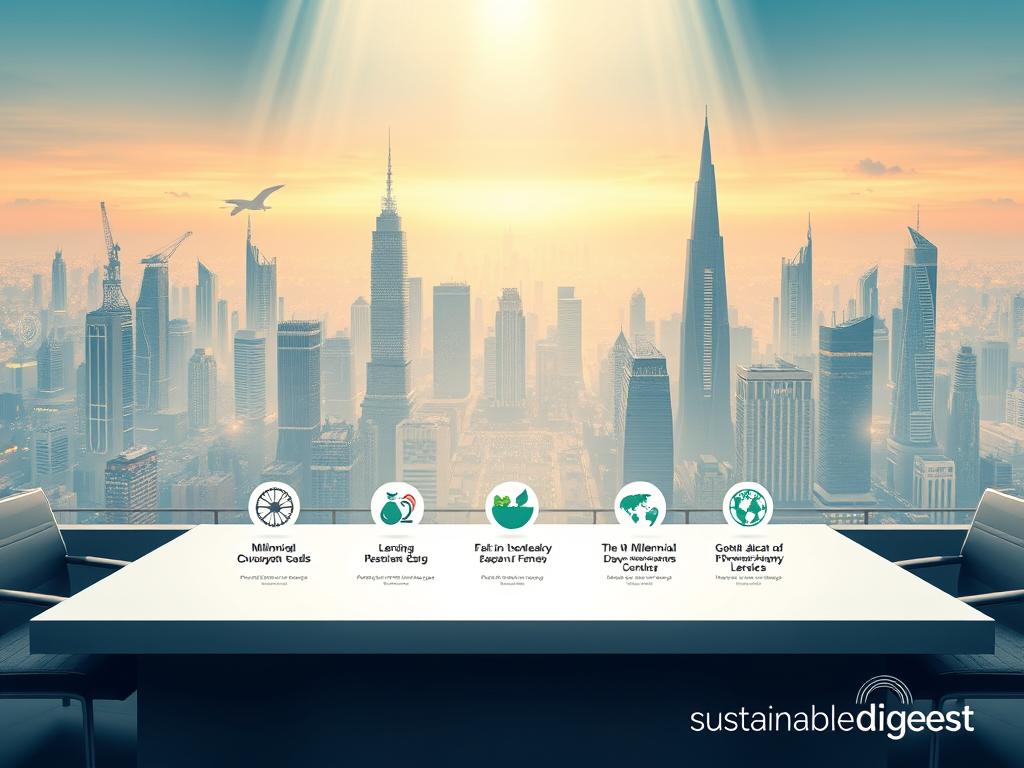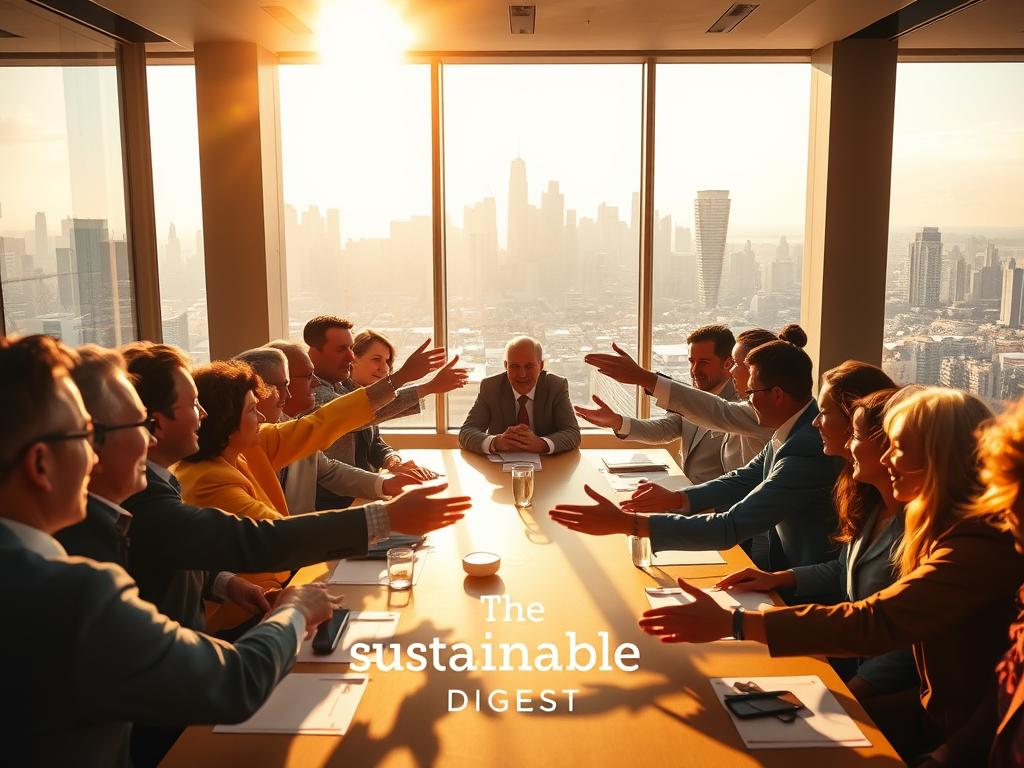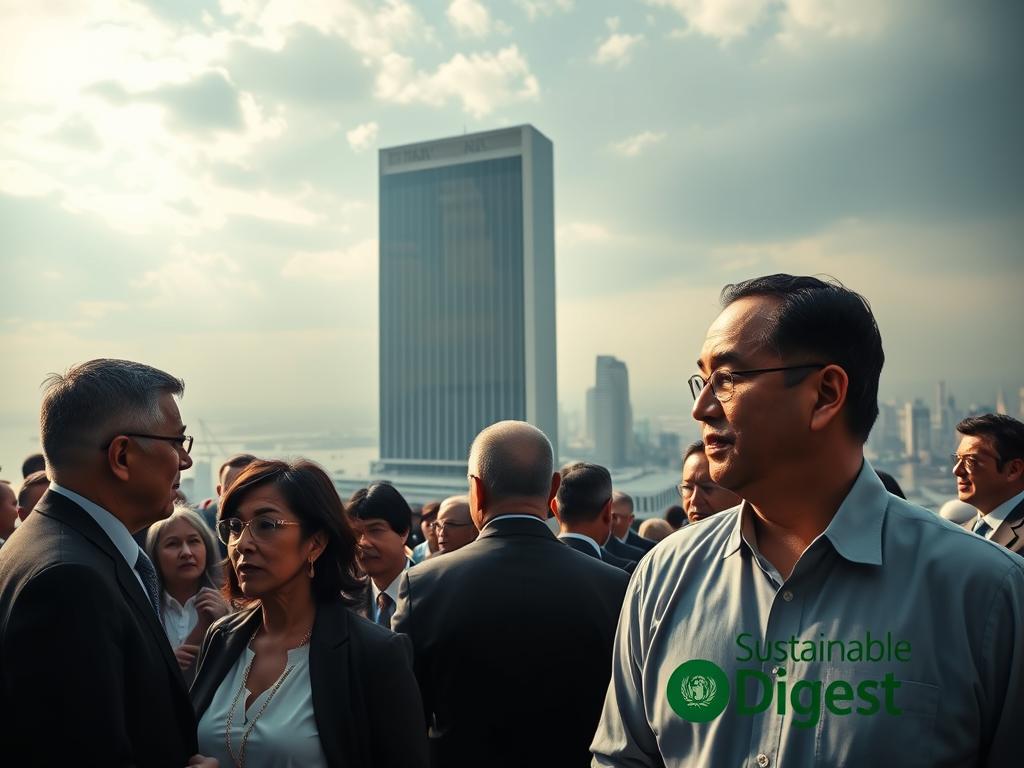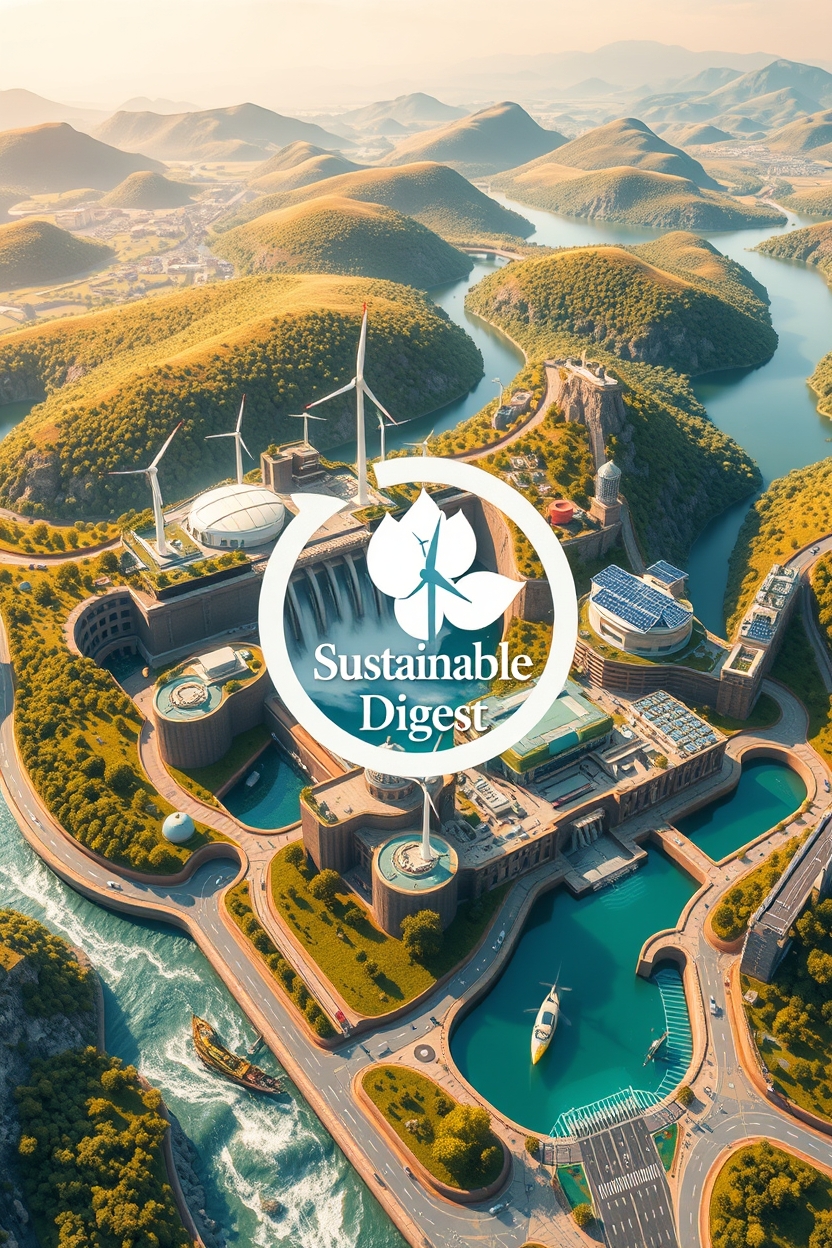
Sustainability reporting standards are key for making the private sector more sustainable. They help companies share their environmental, social, and governance (ESG) impacts. This is important because traditional business models focus too much on profit.
More companies are now reporting on sustainability. In 2019, 90% of S&P 500 companies did this, up from 20% a decade before. This shows that businesses and investors see the value in sustainability for financial success and long-term growth.
But, there’s a problem. There are many different ways for companies to report on sustainability. This makes it hard for them to report fully and for investors to compare. We need a global standard for sustainability reporting. This would make it easier for companies to report and for investors to make informed decisions.
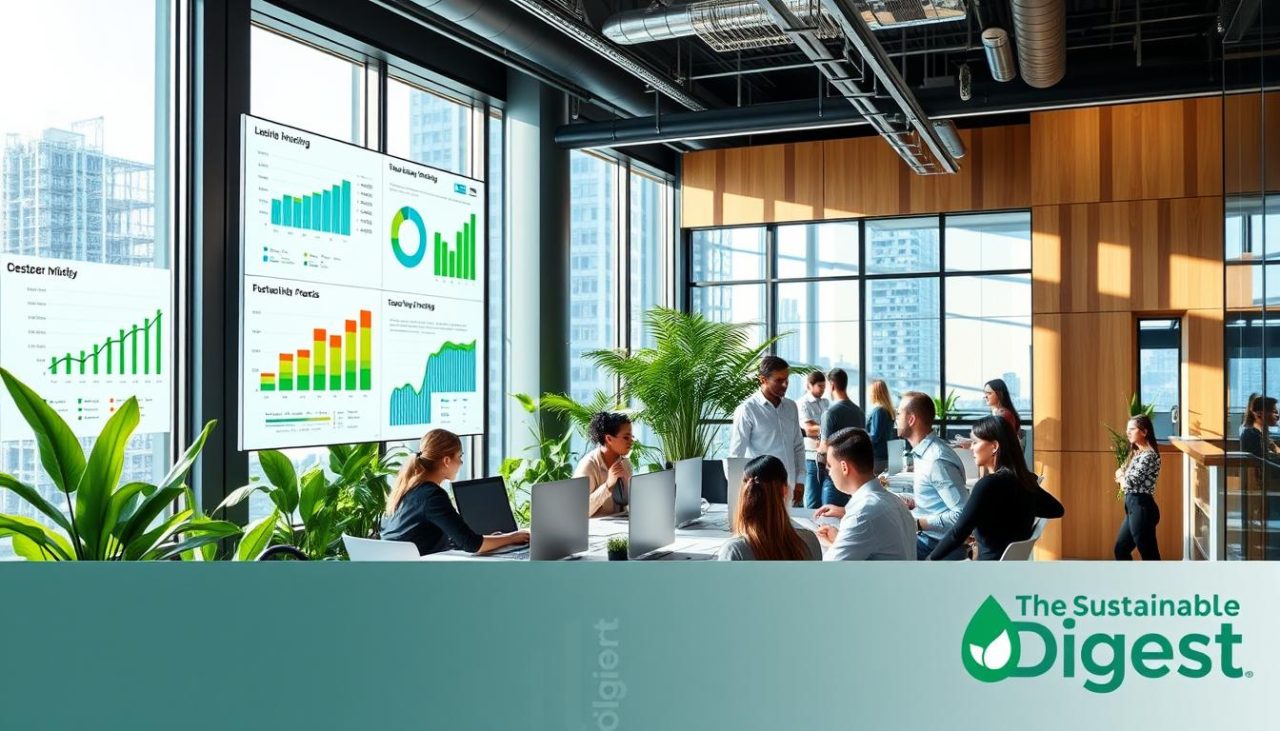
The Evolution and Importance of Corporate Sustainability Reporting
Sustainability reporting has become key for businesses over the last few decades. The Global Reporting Initiative (GRI) set global standards for sustainability reports in 2000. Around the same time, the Greenhouse Gas Protocol was created to help companies track their greenhouse gas emissions.
The UN Global Compact and CDP (formerly the Carbon Disclosure Project) pushed for more corporate transparency. After the 2008 financial crisis, new groups like the International Integrated Reporting Council (IIRC) and the Sustainability Accounting Standards Board (SASB) started. They helped companies understand and share the effects of sustainability.
Key Milestones in Sustainability Reporting
- 1990s: Sustainability reporting started to grow due to pressure from civil society and governments.
- 2000: The Global Reporting Initiative (GRI) released its first sustainability reporting guidelines.
- 2001: The Greenhouse Gas (GHG) Protocol was created as a global standard for greenhouse gas emissions.
- 2015: The United Nations Sustainable Development Goals (SDGs) were adopted, highlighting the importance of corporate sustainability reporting.
- Present: Companies face a complex landscape of reporting frameworks, creating challenges in maintaining consistency and comparability.
Current State of Corporate Reporting
Today, companies worldwide are expected to report on their sustainability performance. But, the many reporting standards and frameworks have made the landscape complex and inconsistent. Companies must find their way through this changing world to give stakeholders clear and honest sustainability reports.
As the need for corporate sustainability information grows, the importance of standardized, high-quality reporting becomes more critical. The path to sustainable business practices needs a clear and consistent way to measure, manage, and share environmental, social, and governance impacts.
Understanding the Business Case for Sustainability Reporting
Sustainability reporting is a big win for businesses in many fields. It makes jobs more meaningful for 73% of EU employees who feel they’re helping society and the planet. It also helps companies stand out in the market, as most U.S. buyers now look at a product’s social and environmental impact.
Reporting on sustainability helps businesses attract and keep the best workers. It also helps them manage risks and find new chances for growth. Companies that report on sustainability meet their partners’ expectations and stay ahead of rivals with strong green plans.
“Sustainability reporting is no longer just a nice-to-have; it’s a business imperative. It empowers organizations to attract and retain the best talent, stay ahead of consumer preferences, and manage risks more effectively.”
The benefits of sustainability reporting are many. They include happier employees, a stronger brand, and better risk handling. They also open doors to new chances for growth. As the world keeps moving towards sustainability, companies that report on it will lead the way.
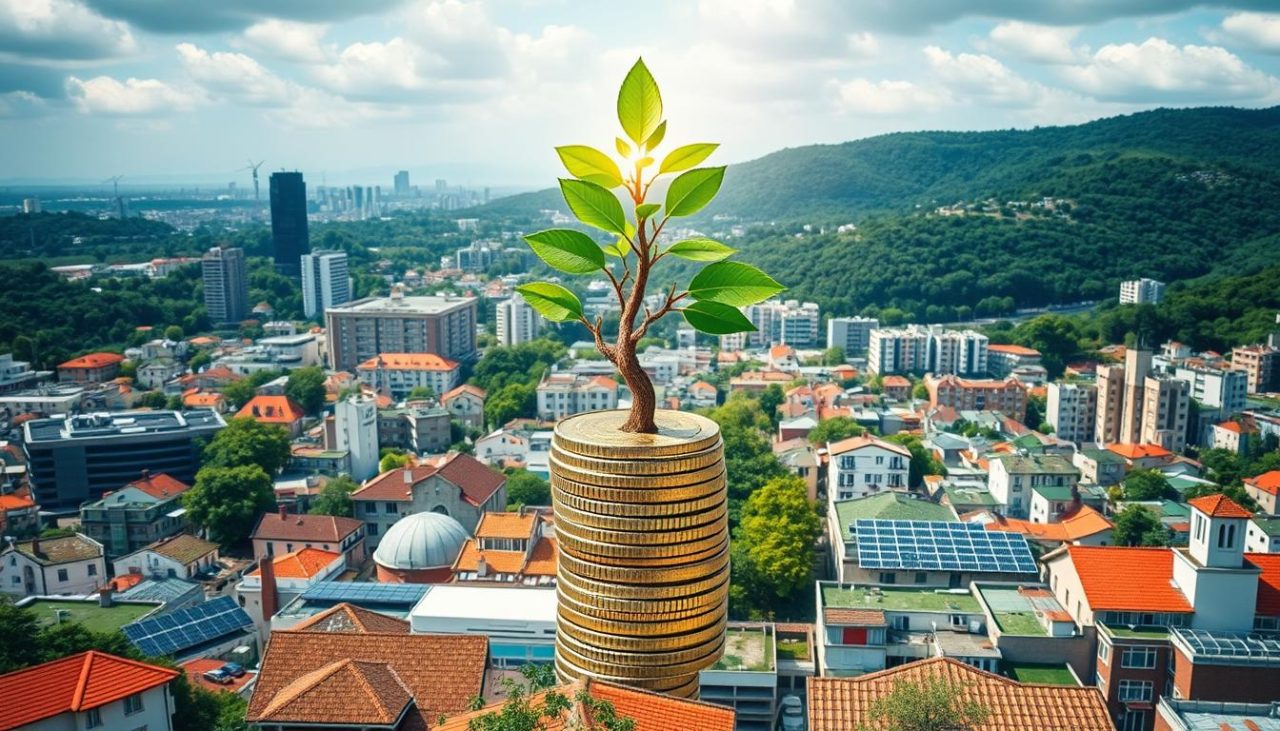
What are the Sustainability Reporting types
Corporate sustainability reporting has many forms to meet changing needs. It includes both mandatory and voluntary reports. These reports serve different purposes for companies, industries, and regulators.
Mandatory vs. Voluntary Reporting
The EU’s Corporate Sustainability Reporting Directive (CSRD) has changed the game for big companies in Europe. Starting in 2025, they must share detailed info on their environmental, social, and governance (ESG) actions. The CSRD will cover private companies too by 2026.
But, companies can also do voluntary reports. These show their commitment to being green and share more than what’s required. The Global Reporting Initiative (GRI) and Sustainability Accounting Standards Board (SASB) are examples of these frameworks.
Integrated Reporting Frameworks
Integrated reporting is becoming more popular. It combines financial and non-financial data in one report. The International Integrated Reporting Council (IIRC) created the Integrated Reporting (IR) Framework for this purpose.
Industry-Specific Standards
Industry-specific standards focus on the unique needs of each sector. The Sustainability Accounting Standards Board (SASB) has 77 standards for different industries. This helps companies and investors focus on what matters most for their field.
The European Sustainability Reporting Standards (ESRS) also use “double materiality.” They ask companies to look at their impact on sustainability and how sustainability issues affect their finances. This helps companies understand and share their sustainability performance and risks.

“Sustainability reporting is no longer a nice-to-have, but a must-have for businesses that want to remain competitive and relevant in today’s global market.”
Key Components of Effective Sustainability Reporting
Sustainability reporting is key for businesses wanting to show they care about the environment, society, and governance. At the core is a detailed materiality assessment. This step is about finding the big issues that affect the company and its stakeholders.
Quantitative metrics and qualitative indicators are also crucial. Metrics give numbers to compare progress over time. Indicators add context and stories about the company’s sustainability efforts.
Reports should cover how the company works and what it makes. This way, they show a full picture of sustainability performance.
Getting feedback from all stakeholders is important. This includes employees, customers, investors, and the community. It helps make sure the report meets their needs and concerns.
Transparency in the supply chain is also expected. Companies must share about their suppliers’ sustainability practices. This makes reports more credible and complete.
The European Sustainability Reporting Standards (ESRS) help guide companies. They outline what data to include for each topic. Following these standards shows a company’s dedication to clear and standard reporting.
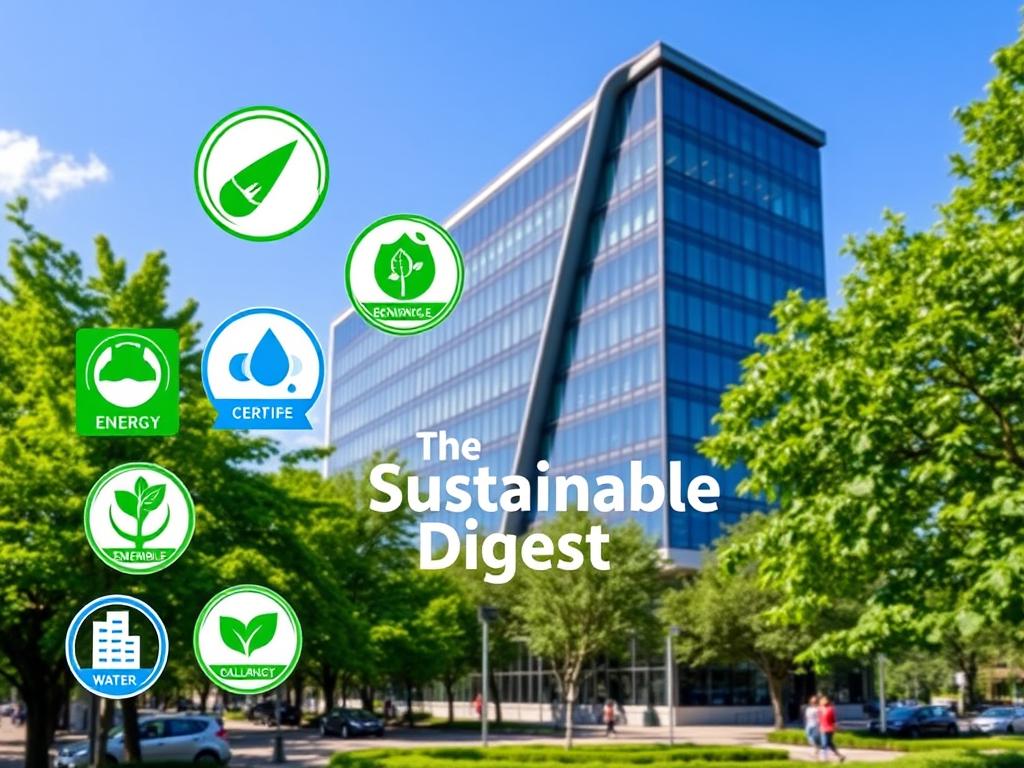
“Sustainability reporting is not just about disclosing data – it’s about showcasing a company’s commitment to responsible business practices and its positive impact on the world.”
The Role of Stakeholder Engagement in Reporting
Stakeholder engagement is key to good sustainability reporting. It involves many groups like investors, the local community, employees, and suppliers. This helps organizations understand their sustainability strategies better.
Investor Requirements and Expectations
Investors now look at environmental, social, and governance (ESG) factors more than before. A study showed 85% of investors use ESG info when choosing investments. So, companies must report on ESG to help investors make smart choices.
Community and Employee Involvement
Listening to the local community and employees gives insights into social and environmental impacts. By talking to more groups, like NGOs and regulatory agencies, companies get a fuller picture of their sustainability. For example, a study on mining in South Africa showed how important stakeholder engagement is for success.
Supply Chain Considerations
Companies are now responsible for their supply chain’s sustainability. Working with suppliers to understand their practices is essential for honest reporting. This not only strengthens relationships but also reduces risks and finds new opportunities.
It’s hard to balance all stakeholders’ interests in reporting. Many use a materiality assessment to focus on what matters most. This method, based on solid data, is needed for rules like the CSRD and ESRS.

“Strong relationships with stakeholders, developed through engagement, can help organizations minimize risk, identify opportunities sooner, and adapt to operational changes over the long term.”
Financial Material Impact and ESG Integration
Sustainability issues are becoming more important in finance. Studies show that good sustainability performance leads to better financial results. More asset managers and owners are adding ESG factors to their investment strategies. They see how these factors can help create long-term value.
Dynamic materiality shows that sustainability issues can become financially important over time. This is because of changing laws and what society expects. Companies are now asked to report on the financial effects of their sustainability efforts now and in the future.
- G7 finance ministers announced a commitment to mandate climate reporting in 2021.
- ESG reporting is included in annual reports to showcase a company’s sustainability efforts, encompassing environmental, social, and governance data.
- Third-party providers like Bloomberg ESG Data Services and Sustainalytics assign ESG scores to grade organizations on their ESG performance and risk exposure.
The European Union is a leader in sustainable finance with strict ESG rules. The EU taxonomy helps identify green activities to stop greenwashing. It encourages companies to focus on sustainability. The Sustainable Finance Disclosure Regulation (SFDR) makes companies reveal sustainability risks. The Corporate Sustainability Reporting Directive (CSRD) makes reporting rules stricter for companies.
Materiality concepts, such as single materiality, impact materiality, and double materiality, are also gaining traction. Double materiality, as incorporated in the European Sustainability Reporting Standards (ESRS), considers the impact of sustainability issues on a company’s financial performance as well as the broader economy and society.
“The EU supports setting a global baseline for sustainability reporting through the ISSB standards, recognizing the importance of standardized, high-quality ESG disclosures to drive long-term value creation.”

Data Collection and Quality Assurance in Reporting
Sustainability reporting needs strong data collection and quality checks. This ensures the info shared is trustworthy. Companies face challenges in getting the right data, especially for complex supply chains and Scope 3 emissions.
There are different ways to measure, making comparisons hard. This makes it tough to combine data from various sources.
Measurement Methodologies
Creating standard ways to measure is a big challenge. Companies deal with many frameworks, each with its own rules and metrics. This makes it hard to compare and track progress.
There’s a push to make these methods match financial auditing standards. This would help make comparisons easier and more consistent.
Verification and Assurance Processes
Third-party assurance is key for reliable sustainability info. Independent checks boost trust and credibility. They show a company’s data analytics and carbon footprint tracking efforts are solid.
Creating strong auditing standards for sustainability reporting is vital. It encourages more use of third-party assurance.
“Transparency and credibility are essential for effective sustainability reporting. Robust data collection and quality assurance processes are critical to building trust with stakeholders.”
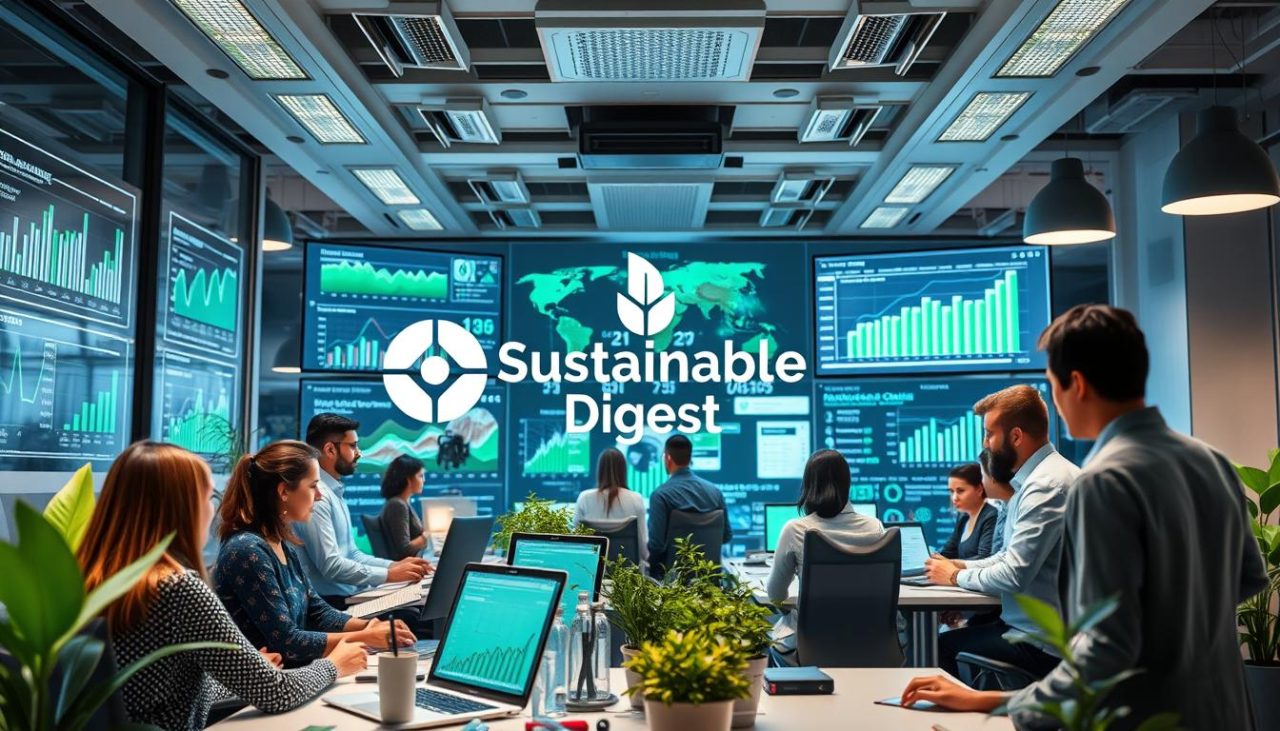
As companies improve their sustainability reports, reliable data and quality control are crucial. Following industry standards and using third-party assurance shows a company’s dedication to openness and responsibility.
Global Standards and Regulatory Compliance
The world of sustainability reporting is changing fast. Global standards and national rules are key in this change. The International Financial Reporting Standards (IFRS) Sustainability Standards Board is leading the way. It aims to make sustainability reporting the same everywhere.
Many countries are stepping up to require companies to report on sustainability. For example, New Zealand and the United Kingdom now need big companies to follow the TCFD (Task Force on Climate-related Financial Disclosures) recommendations. Brazil also plans to make companies report on sustainability by 2026, following the ISSB (International Sustainability Standards Board) standards.
More and more companies and investors see the value in sustainability reporting. Governments are now setting clear rules for reporting. This ensures that companies are transparent and accountable.

- The EU Directive (EU) 2022/2464 requires many companies to report on sustainability. This includes big EU businesses, listed SMEs, and some third-country companies.
- Companies already reporting under the NFRD will start using the CSRD by 2025. Large companies not yet reporting will start in 2026.
- The European Sustainability Reporting Standards (ESRS) started on 1 January 2024. They cover 12 areas, including environment, social, and governance.
As sustainability reporting evolves globally, companies must keep up. They need to follow the latest IFRS Sustainability Standards Board, TCFD recommendations, and national regulations. This ensures they meet their obligations and share important sustainability information with everyone.

“The widespread adoption of global sustainability reporting standards is crucial for promoting transparency, comparability, and accountability in corporate sustainability disclosures.”
Benefits of Standardized Sustainability Reporting
Standardized sustainability reporting brings many benefits to companies. It helps manage risks by showing how a business affects the environment, society, and economy. This understanding helps companies spot and fix problems, making them stronger and more stable over time.
Enhanced Risk Management
Frameworks like the Global Reporting Initiative (GRI) and the Task Force on Climate-related Financial Disclosures (TCFD) make companies share important ESG info. This detailed info helps them see and tackle risks better. It lets them plan ahead and stay ahead of challenges.
Improved Stakeholder Trust
Being open and accountable is crucial for good sustainability reporting. By following set standards, companies show they care about their impact. This builds trust with investors, customers, employees, and local communities. It can also boost a company’s reputation and help it get more funding.
Competitive Advantage
Companies that report on sustainability stand out in the market. Sharing their ESG performance shows they’re serious about being green. This can attract green-minded customers and investors, making them leaders in their field. Plus, the insights from reporting can lead to better operations and new ideas, giving them an edge.

Key Takeaways
- Sustainability reporting standards provide transparency on companies’ environmental and social impacts, addressing the shortcomings of profit-focused business models.
- The rise in sustainability reporting reflects growing recognition of its importance, with 90% of S&P 500 companies publishing reports in 2019 vs. 20% in 2011.
- The current landscape of sustainability reporting is fragmented, with a need for a global set of standards to harmonize approaches and reduce the reporting burden on companies.
- Standardized sustainability reporting can enhance stakeholder trust, improve risk management, and provide a competitive advantage for companies.
- Effective sustainability reporting requires a focus on material issues, stakeholder engagement, data quality assurance, and alignment with financial performance.



